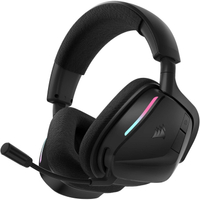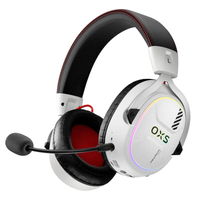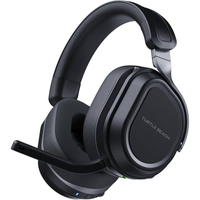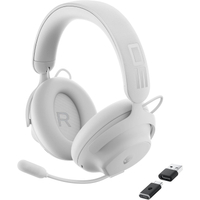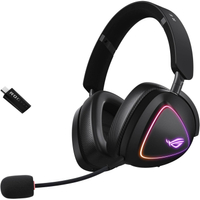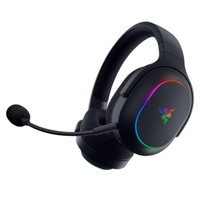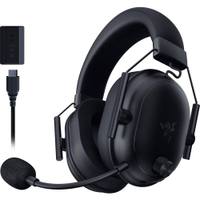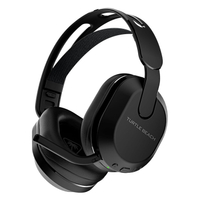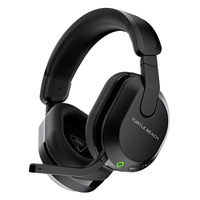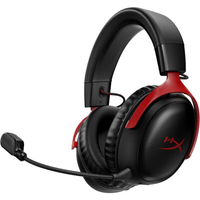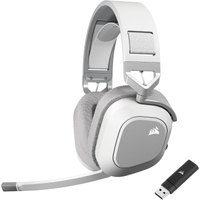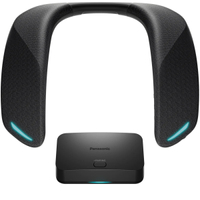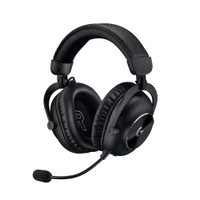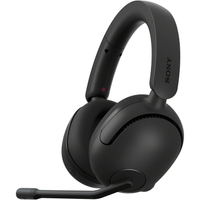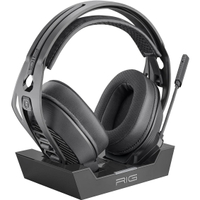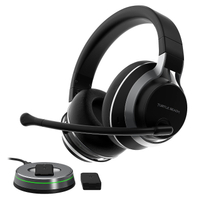Best gaming headset 2025 - the cream of the audio crop
The greatest audio experiences out there
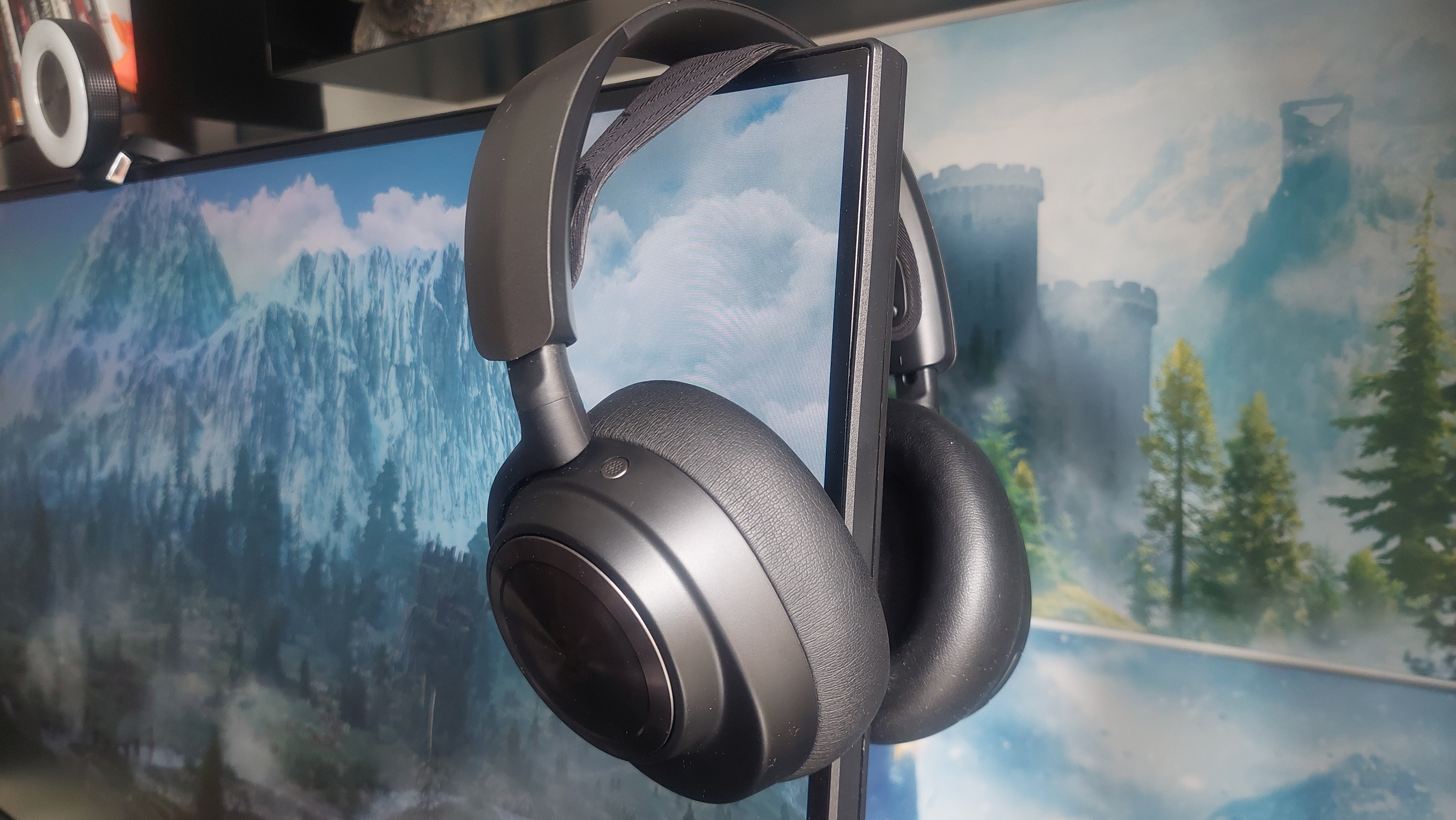
So, you’ve just got yourself a flashy new PS5, Xbox Series X/S or upgraded your precious gaming PC? Well, it’s probably time to pair your new high-powered pixel-pusher with one of the best gaming headsets. Think about it - what’s the point of forking out all that cash if you can’t accurately hear bullets whizzing by, character dialogue, the nuances of modern game soundtracks, or chat with your friends when playing online games?
During my many years as a hardware writer, and even before, I’ve had a plethora of gaming headsets on my head and ears, so I’ve learned a thing or two about what separates the best from the rest. The best gaming headset for you will still ultimately depend on your budget and what high-end features you need above all else . This is why I’ve gathered a myriad of headsets to suit a variety of price ranges that still don’t skip out on providing the best in audio, mic quality, and comfort.
Overall, the SteelSeries Arctis Nova Pro Wireless reigns supreme over other headsets that myself, and the rest of the hardware team have tested, thanks to its existence as a multi-platform battery-saving superstar with fantastic sound and comfort. However, there's no shortage of high-powered and more budget-friendly alternatives out there, and we’ve all of them through their paces - and you can see the results for yourself below.
The quick list
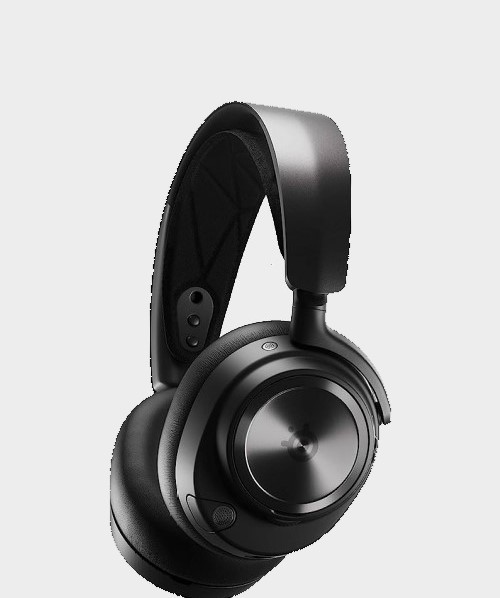
The SteelSeries Arctis Nova Pro Wireless packs a serious audio punch while also offering a whole roster of unique extra features.
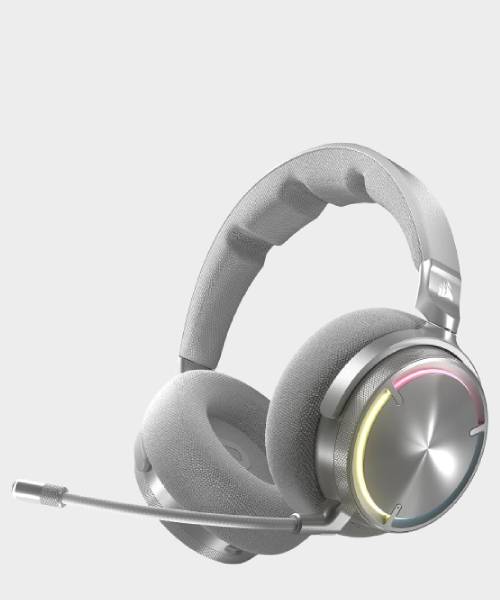
The Corsair Virtuoso Max Wireless takes high-quality audio, ANC, simultaneous Bluetooth and 2.4GHz, and Dolby Atmos and combines it all into one high-value, high-end headset package.
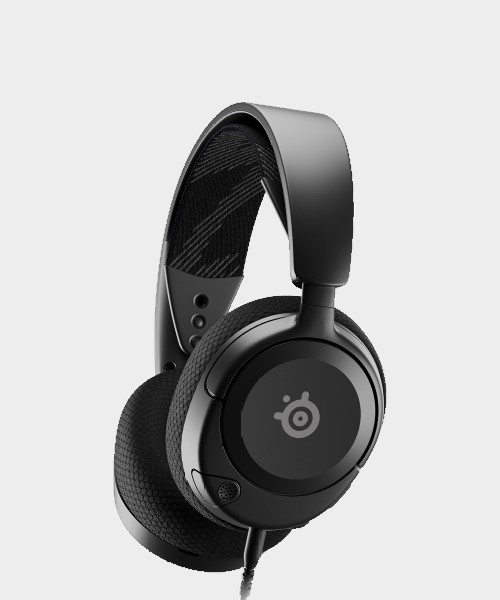
SteelSeries dominates in the budget category as well, with its wired Nova 1 offering incredibly value at for a sub $60 / £60 price point.
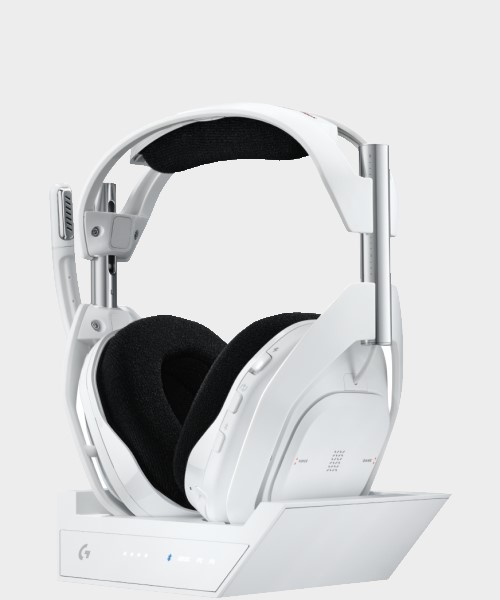
The Astro A50 X is a luxury piece of kit for those running their PC setups alongside different consoles. KVM HDMI switching, a charging base station, and fantastic audio make this a must-see.
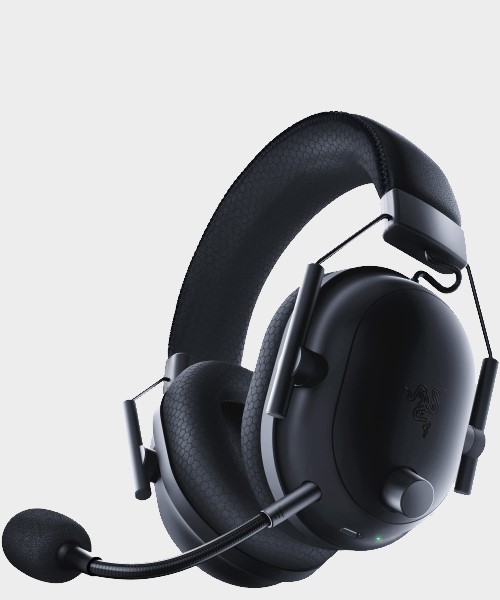
The Pro version of Razer's dedicated PC headset is our top pick for Windows users due to its excellent audio and phenomenal mic.
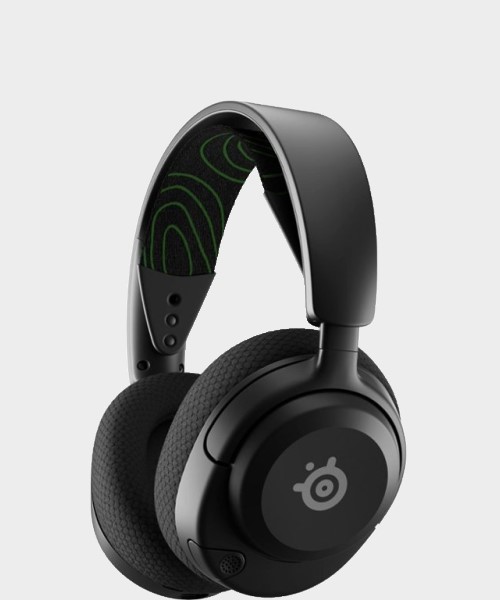
The Nova 5X Wireless does something very few console headsets can - it incorporates high-end EQ presets into faff-free play.
Load the next 3 products ↓
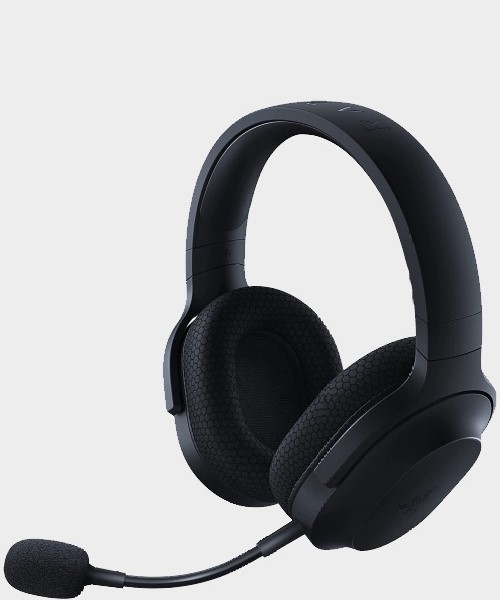
The Razer Barracuda X is a fantastic wireless headset for Nintendo Switch that manages to come in well under $100 / £100 day to day. It's a true plug-and play wizard excellent for handheld play.
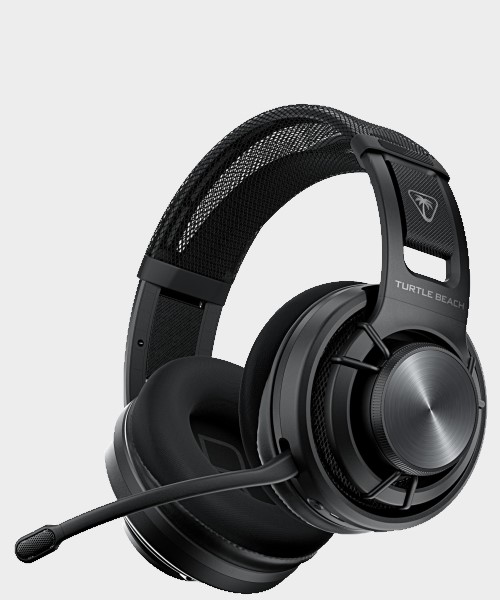
The Turtle Beach Atlas Air is the most comfortable headset we've tested yet, so if you're on the hunt for an open back device this is where you should be looking.
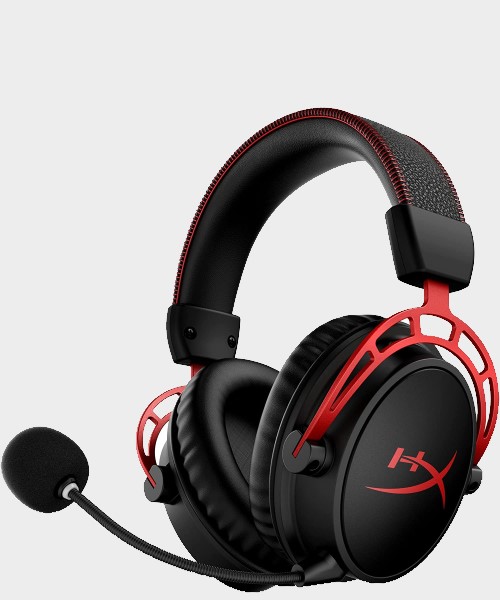
That 300 hour battery life simply can't be beaten, and HyperX backs it up with a pretty spectacular audio quality as well. This is one for those who hate charging.

Gaming headsets have been glued to my head even longer than I've been reviewing them during my time as a gaming tech writer. That's why having a headset with great audio quality, a high-end mic, customization options, and that provide the highest echelons in comfort is of utmost importance to me. Before writing about gaming audio tech, I spent years training as a professional musician, which included getting hands-on experience with studio-grade tech. This music degree, combined with my time spent reviewing headsets has since only emphasized my insistence on ensuring everyone has the best gaming audio experience possible, no matter the budget.
Recent updates
April 22 - For this update, I added the Corsair Void Wireless V2 wireless gaming headset to the 'also tested' section at the bottom of this guide. The $119.99 / £99.99 is one of the best budget pair of cups in the brand's repertoire, and packs in fantastic sounding custom 50mm Neodymium audio drivers, along with customizable RGB lighting and a great sounding mic into one great-looking package. That being said, the SteelSeries Arctis Nova 1 and the Razer Barracuda X are more affordable, and the wired option provided by Razer's budget alternative means the Corsair Void V2 won't be taking its place on this list, as of typing.
Additionally, for this update, I also updated the FAQ to include details regarding the upcoming Switch 2, which will, of course, be taken into consideration with future updates of this guide, once it launches on June 5, 2025.
The best gaming headset overall

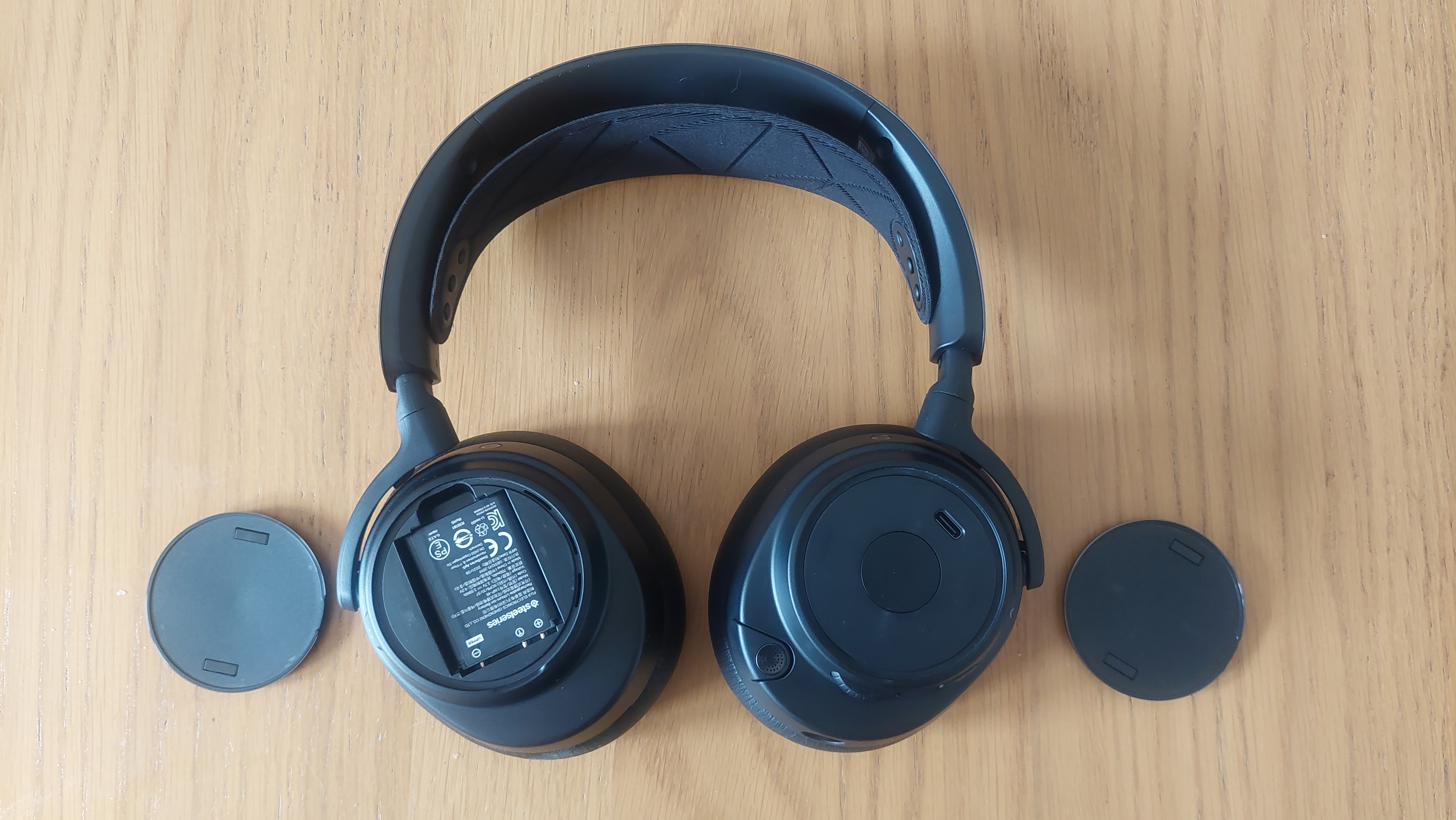
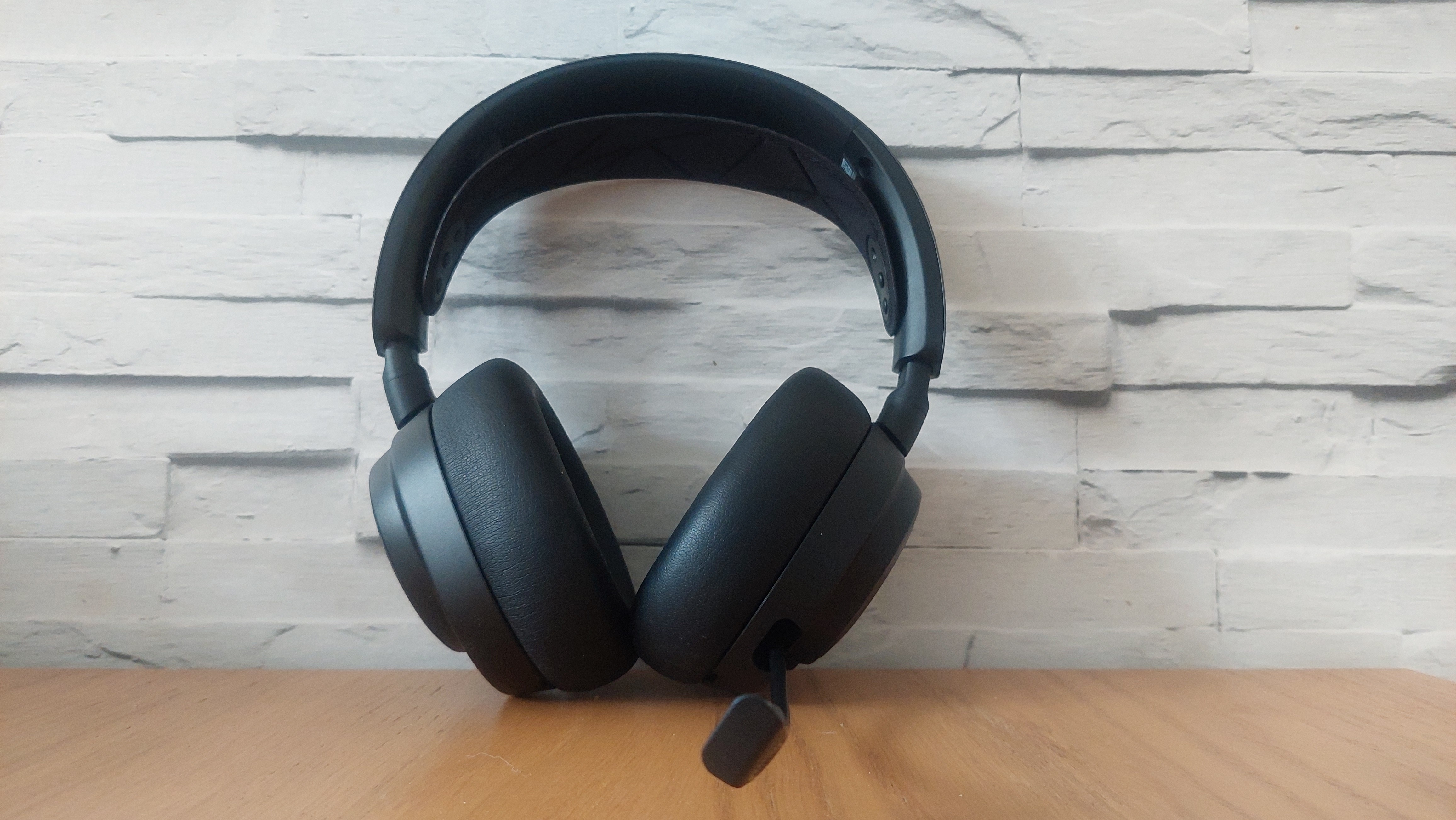
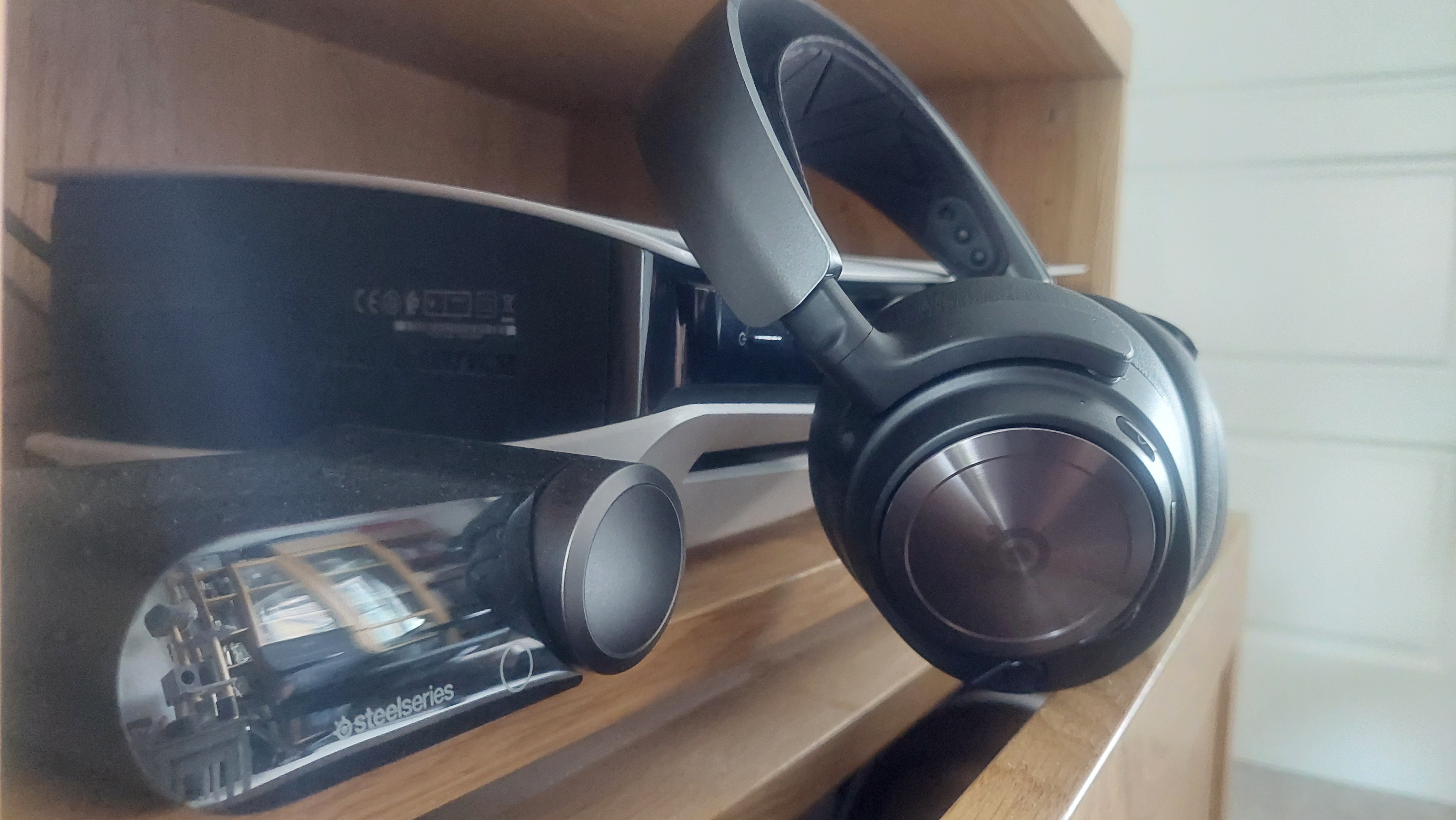
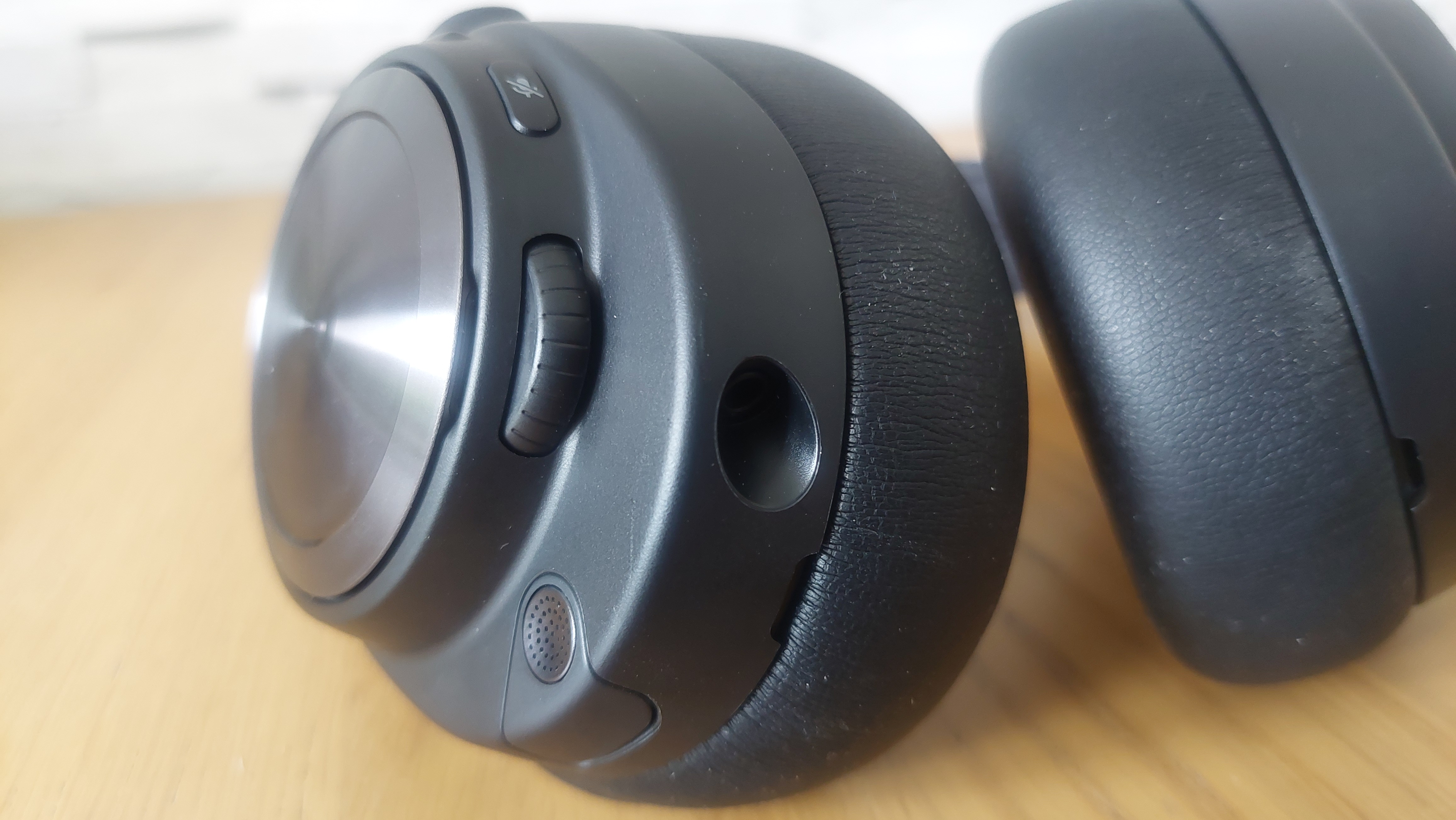
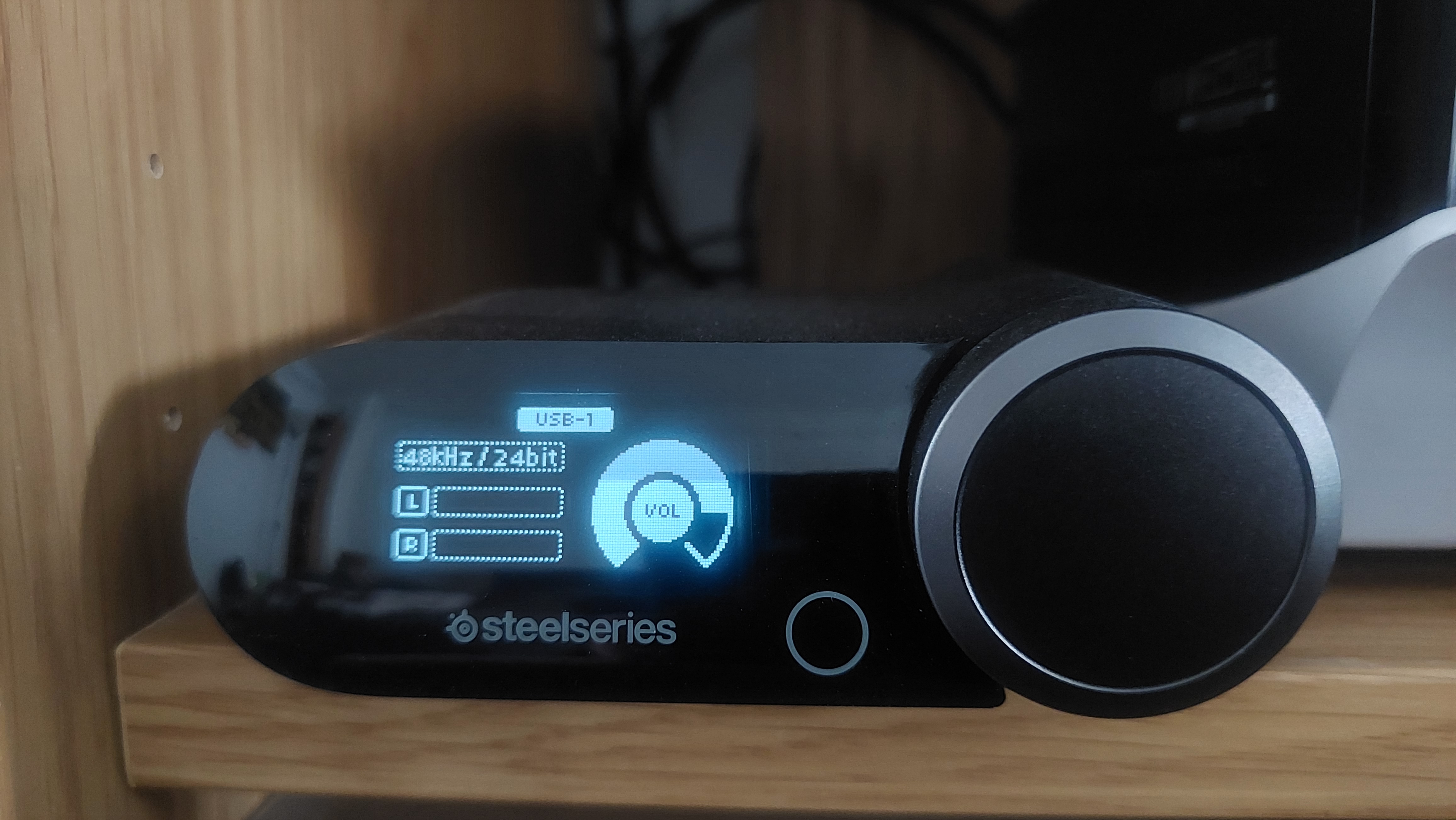
Specifications
Reasons to buy
Reasons to avoid
It's been a couple of years now, but the SteelSeries Arctis Nova Pro Wireless still reigns supreme. This is a feature-rich headset that sings, and continues to prove its worth over newer releases from other brands on a daily basis. Not only that, but discounts are starting to appear more frequently now, which means you might be able to catch it much closer to $279 / £279 if you're shopping at the right time.
✅ You're investing long term: This isn't a cheap headset, but it will go the distance if you're looking to spend big now and reap the rewards for years to come.
✅ You play across PC and consoles: That dual-connection hub makes the most sense for those splitting their time between PC and console within the same setup.
✅ You don't like plugging in: The hot-swappable battery packs in the cup were revolutionary when we first tested them. Simply slot one battery in to charge and slap another in your headset and you'll never have to juice up again.
❌ You only play on one system: If you're not splitting your setup, the amount you're paying for those dual-connectivity and easy switching features doesn't make sense. We'd recommend checking out some of the more platform-specific options on this list if you fly solo.
❌ You don't want to fiddle with EQ: There is a little work going into getting the best audio possible out of the Nova Pro Wireless. Anyone looking for an easy plug and play device might want to consider something more streamlined.
Design: The Nova Pro Wireless looks fairly similar to the rest of SteelSeries' latest line, with its smaller 40mm cups, ski-band frame, and deep cushions. We're big fans of this design, though, so with the Pro's extra touch of luxury these cups absolutely shine. The aesthetic is just subtle enough to pass as a normal set of headphones when commuting, while also hiding its own gaming secrets (like the extendable mic neatly tucked into the side). 2024 also saw the first alternate colorway, with a white model hitting the shelves in the spring.
Features: We'll get first to what we found to be the most helpful extra feature in our testing; hot-swappable batteries. You get two out of the box, with each battery carrying 22 hours of charge by itself (more than the Turtle Beach Stealth Pro's implementation at 12 hours) and charged inside the included hub. When one burns out, simply remove it from the cup of the headset and swap it for the charged alternative.
The hub itself is more than just a connection to your consoles and PC, it's a full EQ system with its own display, control dial, and menu. That's perfect for on-the-fly fine tuning, with easy access for switching between devices. It's not quite as sophisticated as the KVM switching functionality of the Astro A50 X below, but it's certainly still ahead of most competitors.
Audio: SteelSeries has always excelled in its audio, prioritizing natural tones with excellent clarity and definition. While the previous Arctis line could sometimes drop the lower ranges a little, the Nova Pros feel incredibly robust across the full soundstage.
There's power here, for sure, but those bassier tones also still manage to carry a crispness that crunches through with particular detail. That's incredibly difficult to pull off, but makes all the difference on the battlefield.
The Verdict: The SteelSeries Arctis Nova Pro Wireless can do it all, in a way very few gaming headsets can seek to replicate. This is a fantastic piece of kit well deserving of the top spot.
Read our full SteelSeries Arctis Nova Pro Wireless review for more.
Comfort | 4/5 |
Audio | 5/5 |
Battery | 5/5 |
Microphone | 5/5 |
Versatility | 5/5 |
Build quality | 5/5 |
The best gaming headset for most people
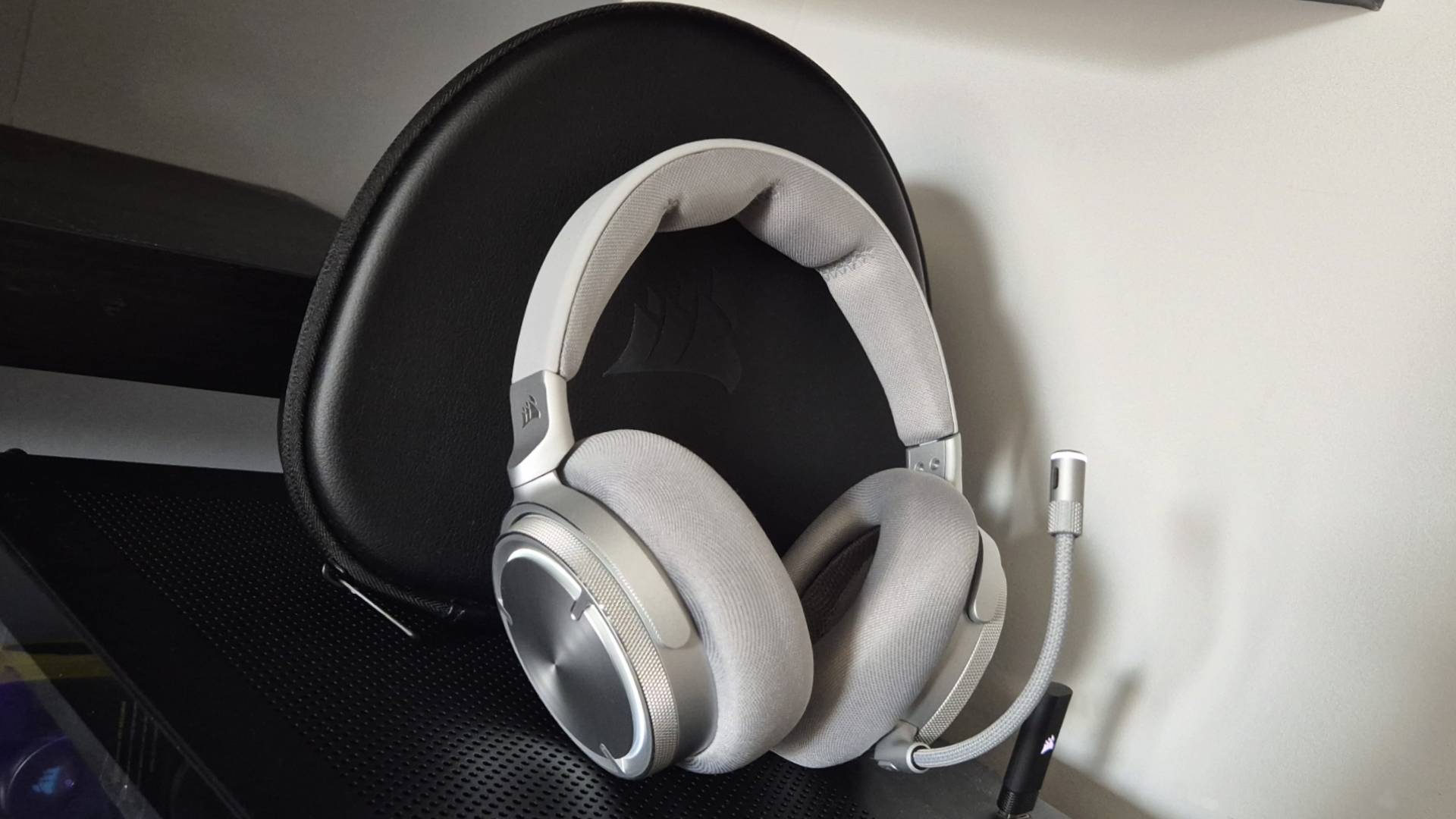
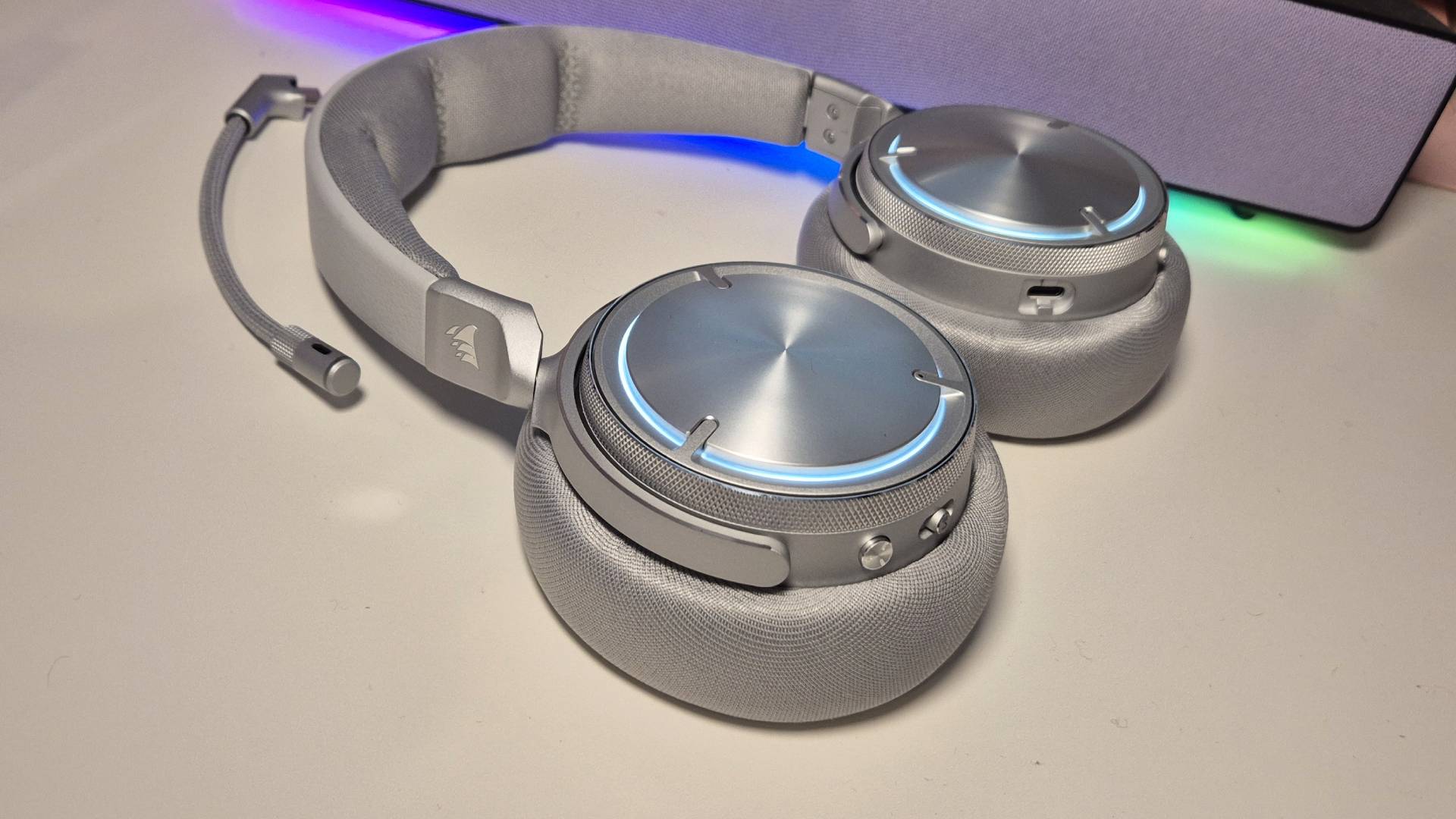
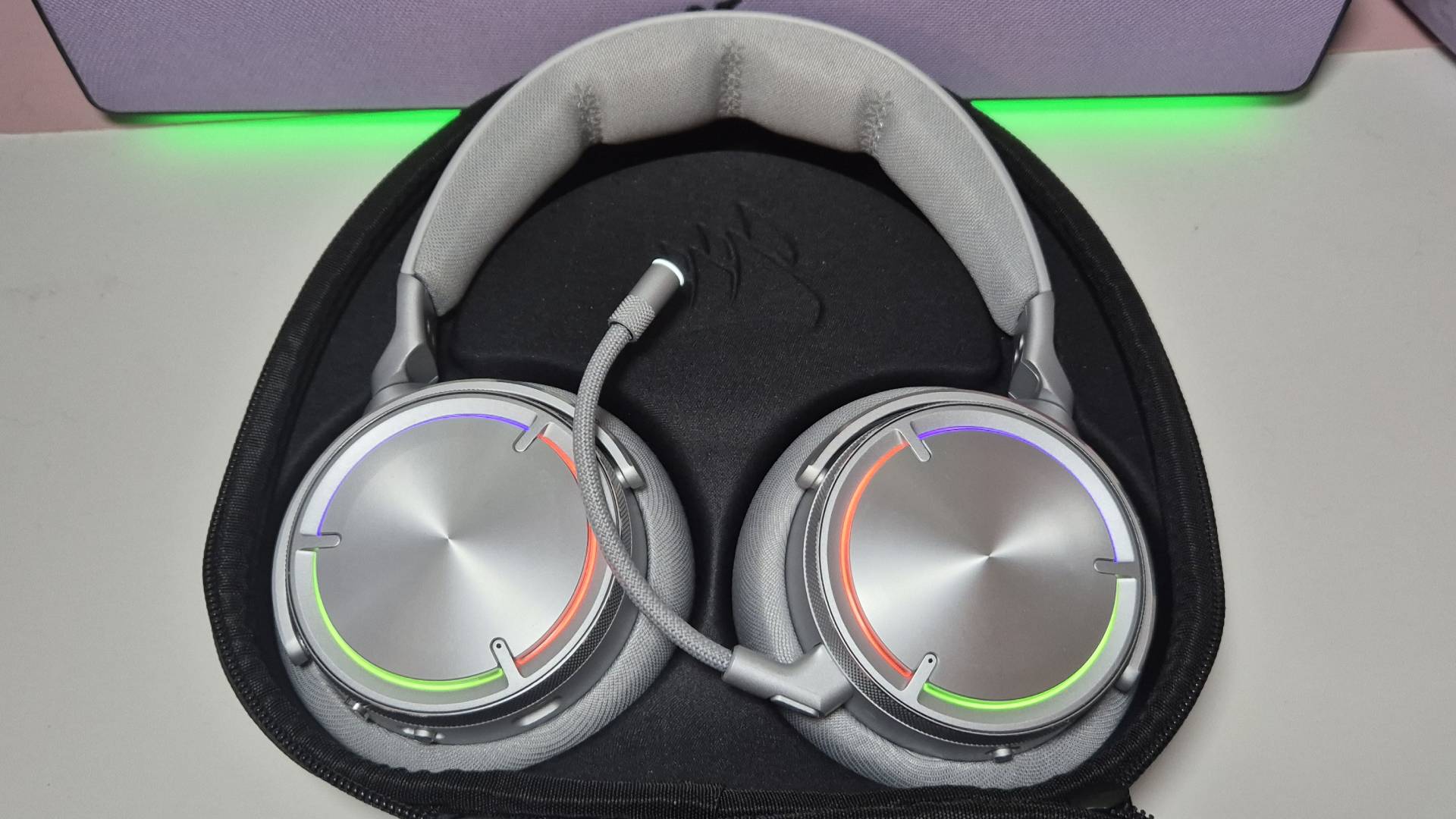
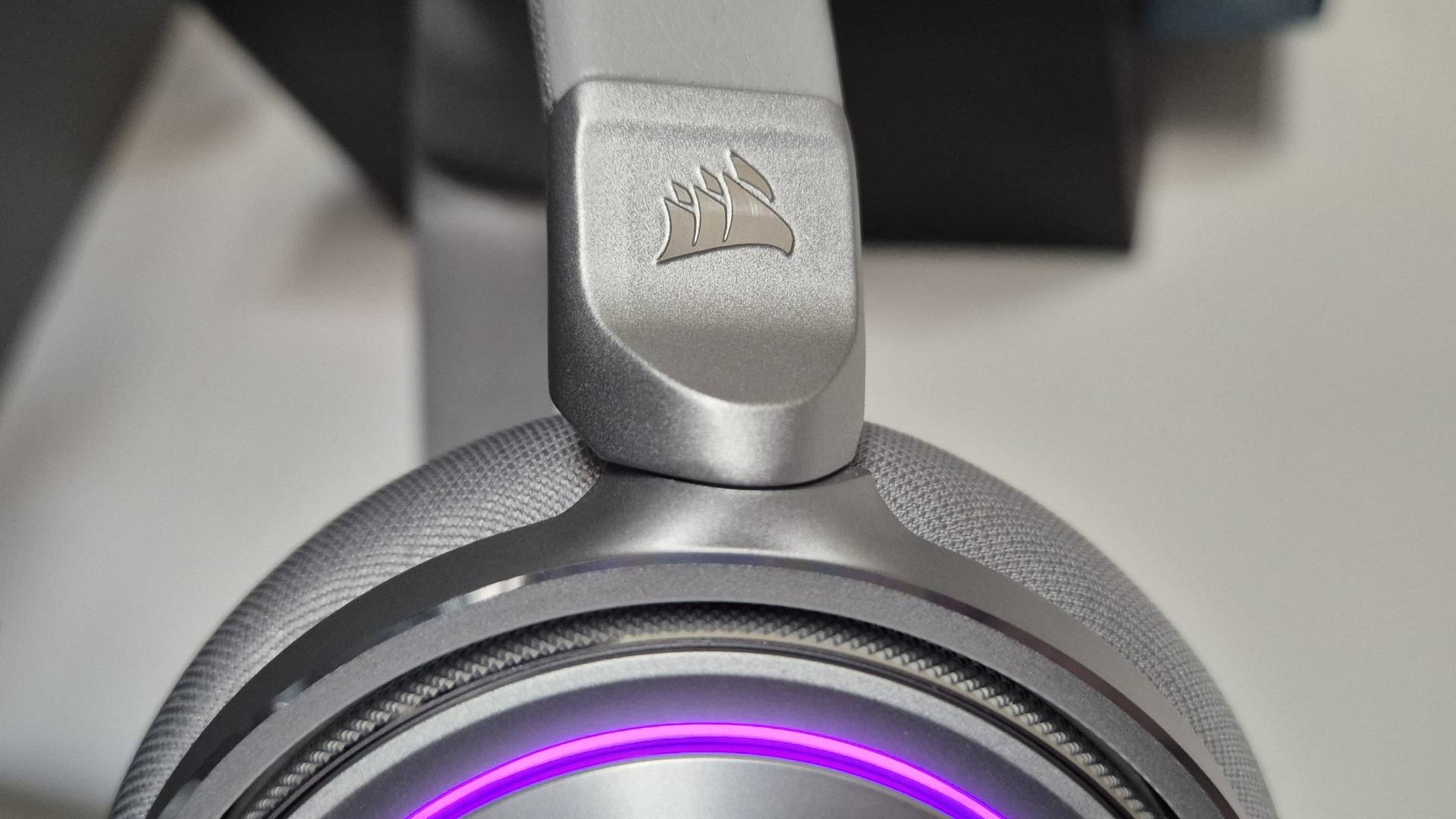
Specifications
Reasons to buy
Reasons to avoid
The Corsair Virtuoso Max Wireless headset isn't the cheapest gaming headset out there, but even for $330 / £279.99 it's full to the brim with features and packed in value, especially for multi-platform players. Its custom 50mm graphene audio drivers sound the part, and give justice to every game, no matter if it's on the Nintendo Switch, PS5, or PC. Combining that with a high-quality detachable mic, unique onboard controls, customizable lighting, a long battery life, and lighting and audio customization, the Virtuoso Max truly shines as one of the best gaming headsets available today.
✅ You need Dolby Atmos: If you own any Dolby Atmos-compatible games, you can up the level of immersion with this headset by switching on Dolby Atmos, and get access to its additional range of audio pre-sets via the Dolby Atmos app (on PC) too.
✅ You're already in the Corsair ecosystem: If your setup is already built up on Corsair accessories, adding the Virtuoso Max into the mix means you stick with iCue for audio pre-sets and customization settings, and you can sync up lighting effects with the other Corsair-compatible peripherals too.
❌Comfort is key: At 417g, this is one of the heaviest headsets available today, and it can get uncomfortable fast. If you have an extra sensitive noggin, it's best to stick with a lighter alternative like the Razer BlackShark V2 Pro.
❌ You need a better battery: The battery of the Virtuoso Max can drain fast if you have ANC and the lighting at full brightness at all times. With the SteelSeries Arctis Nova Pro Wireless at a similar price point, its battery solution is a better alternative for those who want to spend less time charging and more time playing.
Design: The design of the Virtuoso Max Wireless headset is an impressive one, and it easily stands out amongst a sea of all-black gaming headsets. I tested the 'Silver' version, which looks incredibly chic with its silver engraved Corsair logos and gleaming metal cups. The sleek design continues throughout, thanks to the headsets light gray leather headband with its Corsair-branded engraving. The aesthetic and robust chassis of the pair of cups was only emphasized the second the first moment I turned it on, where the the six individual rings of both cups lot up white one by one, simulating the initial flickering of an overhead office light - adding to its unique and sophisticated look.
Features: This headset is also decked out in features. As you would expect from any headset over the $300 price range, it has active noise canceling, which can be turned on at the push of a button. The Virtuoso Max also comes with simultaneous Bluetooth and 2.4GHz wireless audio, and you can also experience the immersive delights of Dolby Atmos audio with these cups. As a Corsair headset, it's compatible with iCue, which opens up more realms of personalization, including EQ audio presets, lighting effects, and quick access settings for checking on the remaining battery and letting you remap the unique control wheels on either side of the headset.
Audio: The 50mm Custom Graphene audio drivers pack a punch, but mainly where PC players are concerned. That’s not to say it doesn’t sound great when paired with Sony’s current-gen console, and it's still one of the best gaming headsets around, regardless of the platform. But you need the PC to make use of all the audio presets and customization through iCue and the Dolby Atmos app, which makes the Virtuoso Max feel more like a PC headset. With the 3D immersive stylings of Dolby Atmos at my disposal, I could play Sea of Thieves and truly feel like I was below deck as the creaks of my ship sounded off all around me, and keep track of the footseps of enemies in matches of Counter-Strike 2. Having the EQ options and various audio presets through Dolby Atmos available to me meant I could also boost the bass up even further and get that perfect resonating booming quality to my audio, which made any game, music, or TV show sound exactly how I liked it.
Verdict: The Corsair Virtuoso Max Wireless headset is a premium pair of cups in price and in features. The headset is packed with simultaneous Bluetooth and 2.4GHz wireless audio, ANC, Dolby Atmos, customizable lighting, and unique control wheels, making its price feel entirely justified when you consider all the high-end features you're getting in one sublime sounding package.
Comfort | 3/5 |
Audio | 5/5 |
Battery | 4/5 |
Microphone | 5/5 |
Versatility | 4/5 |
Build quality | 5/5 |
The best cheap gaming headset
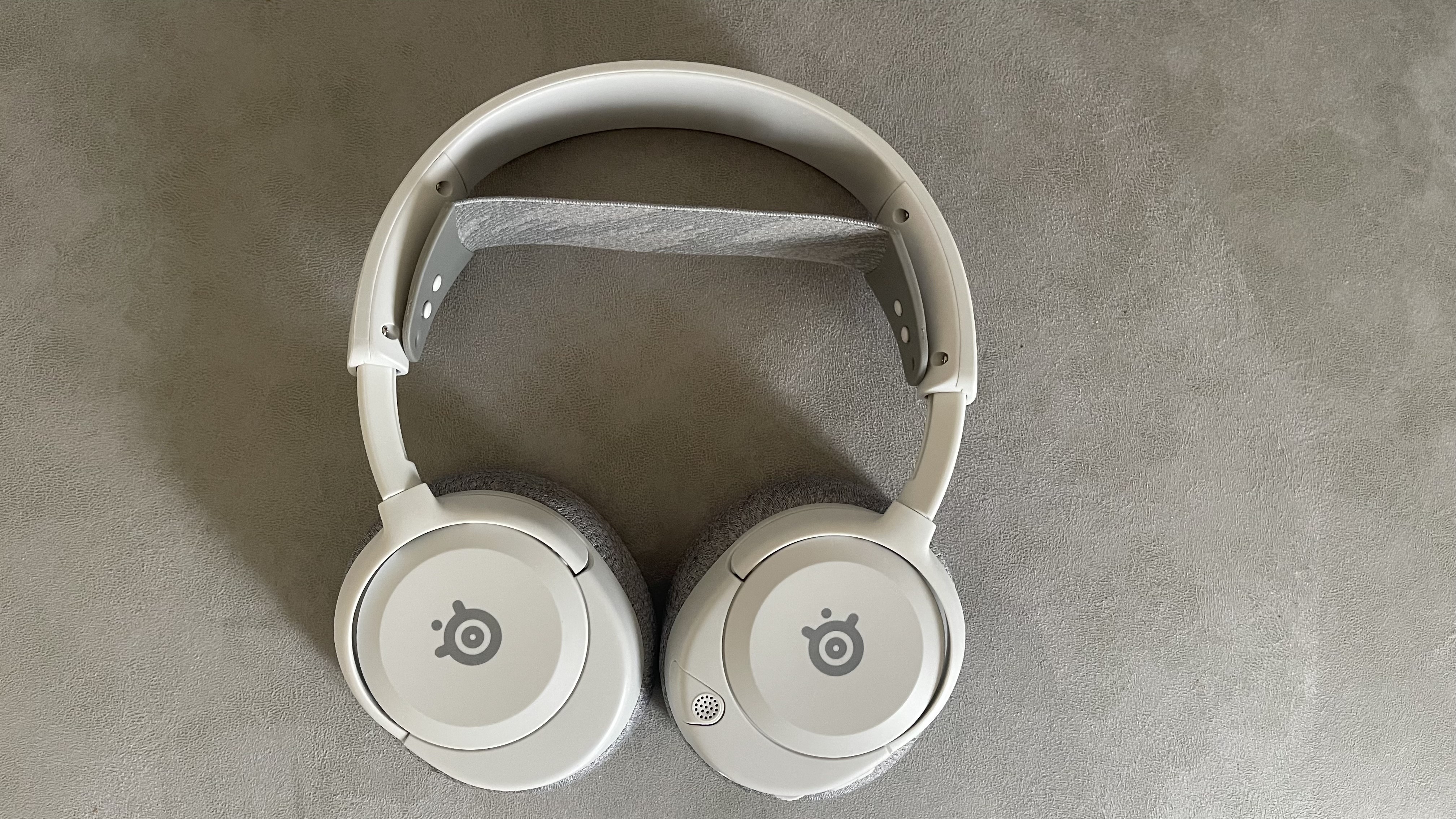
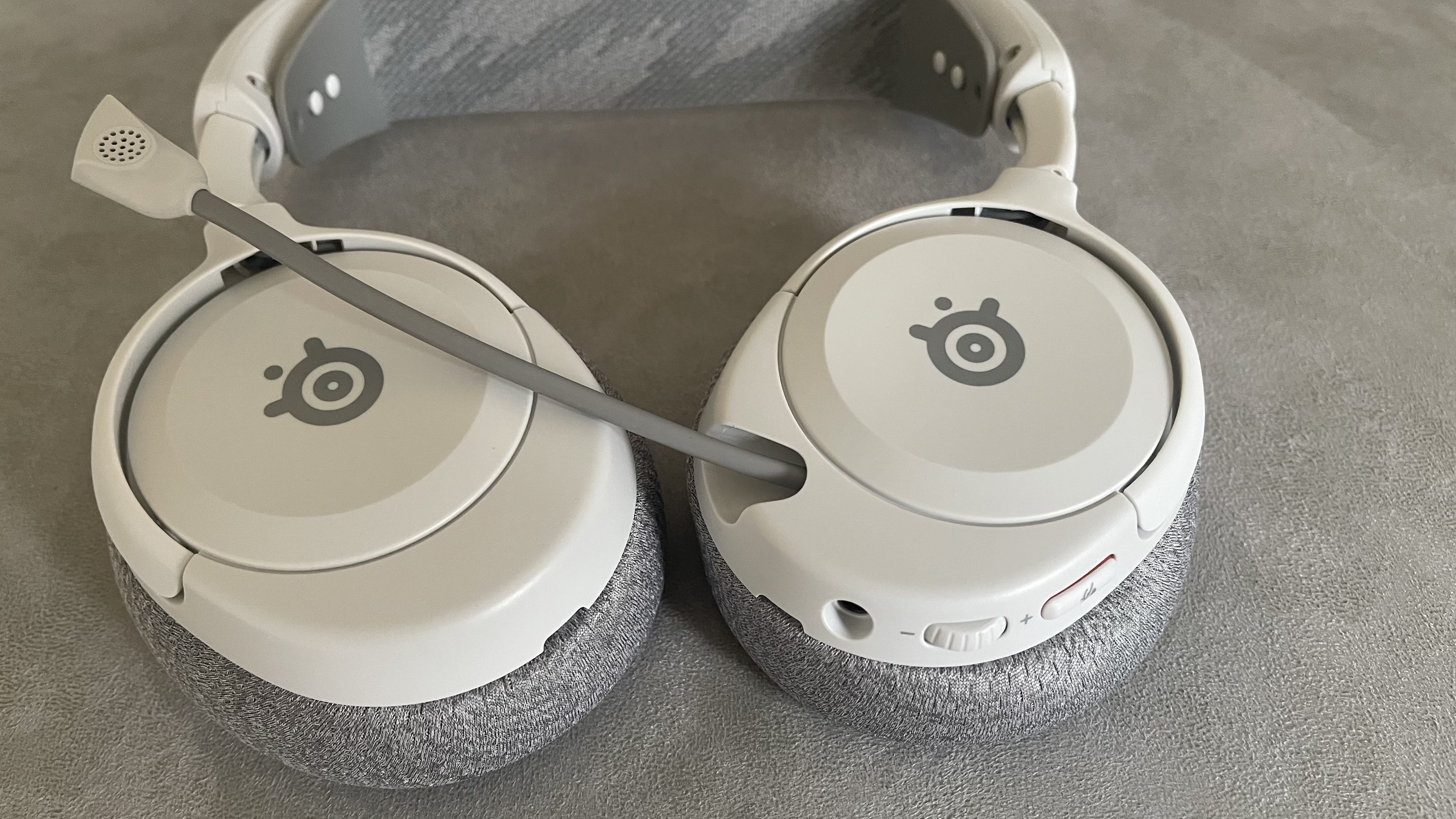
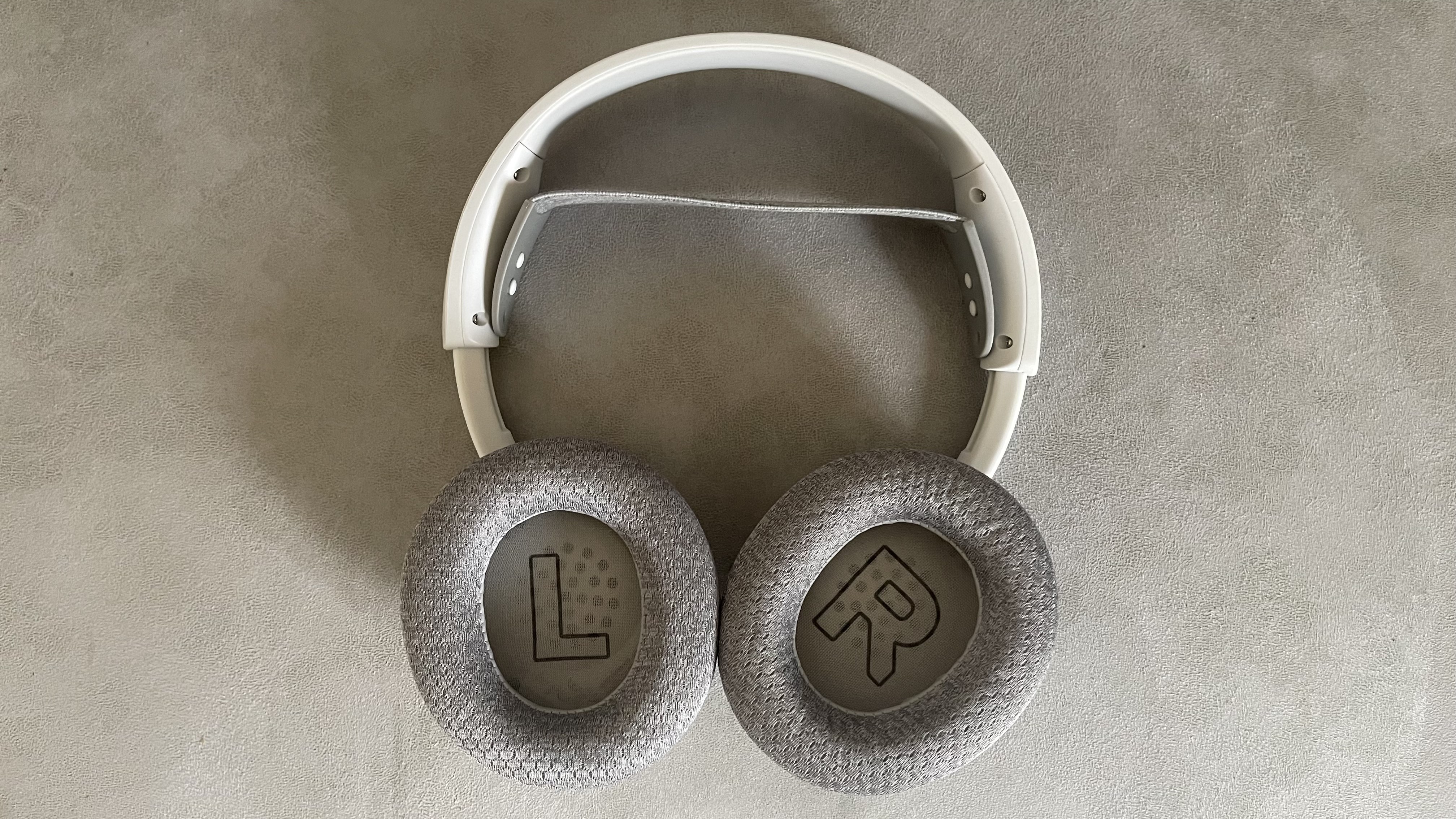
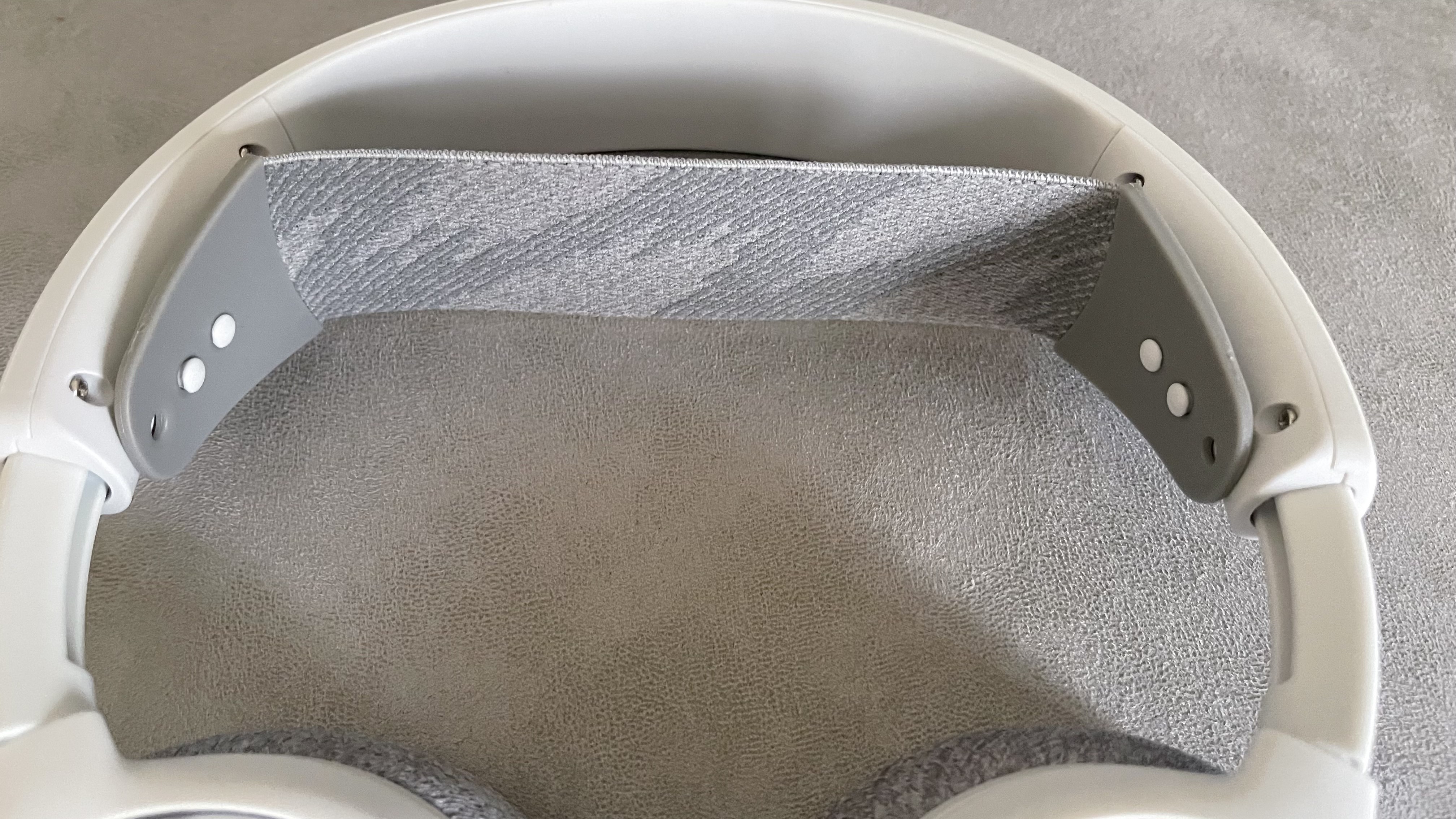
Specifications
Reasons to buy
Reasons to avoid
The SteelSeries Arctis Nova 1 is now the best cheap gaming headset on the market, after our previous contender didn't quite hold up to the newer release in testing re-runs. It's been five years since the Corsair HS35 first impressed us, but the 2022 SteelSeries release is better in every way.
✅ You don't need a wireless connection: Budget headsets keep their prices low by keeping that cable tethered, and the SteelSeries Arctis Nova 1 is no different.
✅ You switch between solo and online play: The retractable microphone is an excellent feature this far down the price scale, and means your comms are always just a second away without getting in your face during single-player adventures.
❌ You play competitively: With stereo sound limiting your directional cues, we'd recommend avoiding if you're going to be relying on 360 sound for competitive or immersive benefits.
❌ You don't get on with a ski-band design: The Arctis Nova 1 shares the ski-style headband of its more premium contemporaries, but not everyone finds this style comfortable. For the most part, it alleviates pressure around the crown, but if you prefer more padding instead it's worth checking out the Corsair HS35 still.
Design: Your eyes don't deceive you, the SteelSeries Arctis Nova 1 bares a striking resemblance to its much more expensive Pro sibling sitting at the top of our list. While the actual materials used mean this does feel like a cheaper headset in the hands, you're still getting the solid frame, elastic headband, and smaller circular cups that have come to define the Nova range. You're also getting that retractable microphone - a gift on the Nova Pros and still just as handy here. Rather than worrying about unplugging the mic (and eventually losing it) like most budget headsets, you can simply slide it back into the housing when not required. That's a design element far more commonly seen on high-end devices.
Features: It should be obvious looking at the price difference that the Nova 1s offer a far more restricted feature set than the Pros or Nova 5s listed further down this page. However, they still beat the market across frequency range (moving further into the highs than the Corsair HS35), microphone, surround sound, and adjustability. Onboard controls are limited to a volume wheel and chat mute (as is generally to be expected in the budget category), and there's no chat mix dial on the headset itself.
SteelSeries has, however, granted its cheaper headset an extra edge in the competitive world. While it's not going to see you through more cutthroat scenarios, the brand's software support can enhance your directional audio and allow for EQ tweaks as well.
Audio: For their high-end design and simple but effective feature set, it's the audio performance of the Nova 1s that really make them shine. In our testing, the difference between this $50 / £50 headset and the Arctis Nova 7 was remarkably subtle. Everything is particularly clear and well-rounded, with nice balancing around the mids and lower ranges (which can often be artificially boosted in cheap gaming headsets). No, they're not going to give more premium headsets anything to sweat about - this is still an entry level offering - but the developments SteelSeries has made in this budget category are impressive.
The Verdict: The SteelSeries Arctis Nova 1 does exactly what you want it to do for $50 / £50. It plugs directly into anything you want it to and fires game audio into your ears well. SteelSeries has added features and an audio quality that you won't normally find at this budget price point, though, making their entry level device the best on the market. for more.
Read our full SteelSeries Arctis Nova 1 review for more.
Comfort | 4/5 |
Audio | 3/5 |
Battery | N/A |
Microphone | 3/5 |
Versatility | 4/5 |
Build quality | 4/5 |
The best multiplatform gaming headset
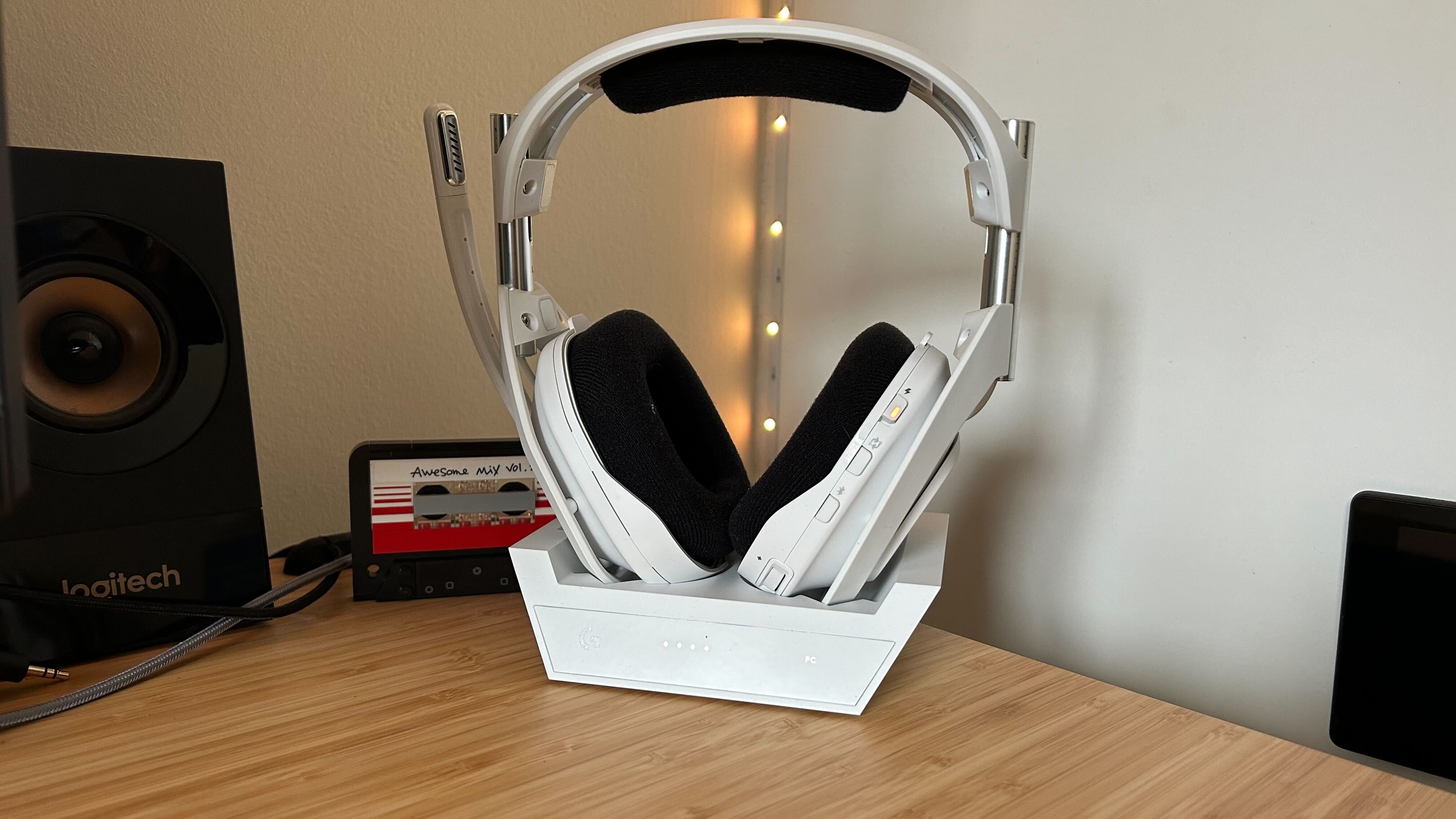
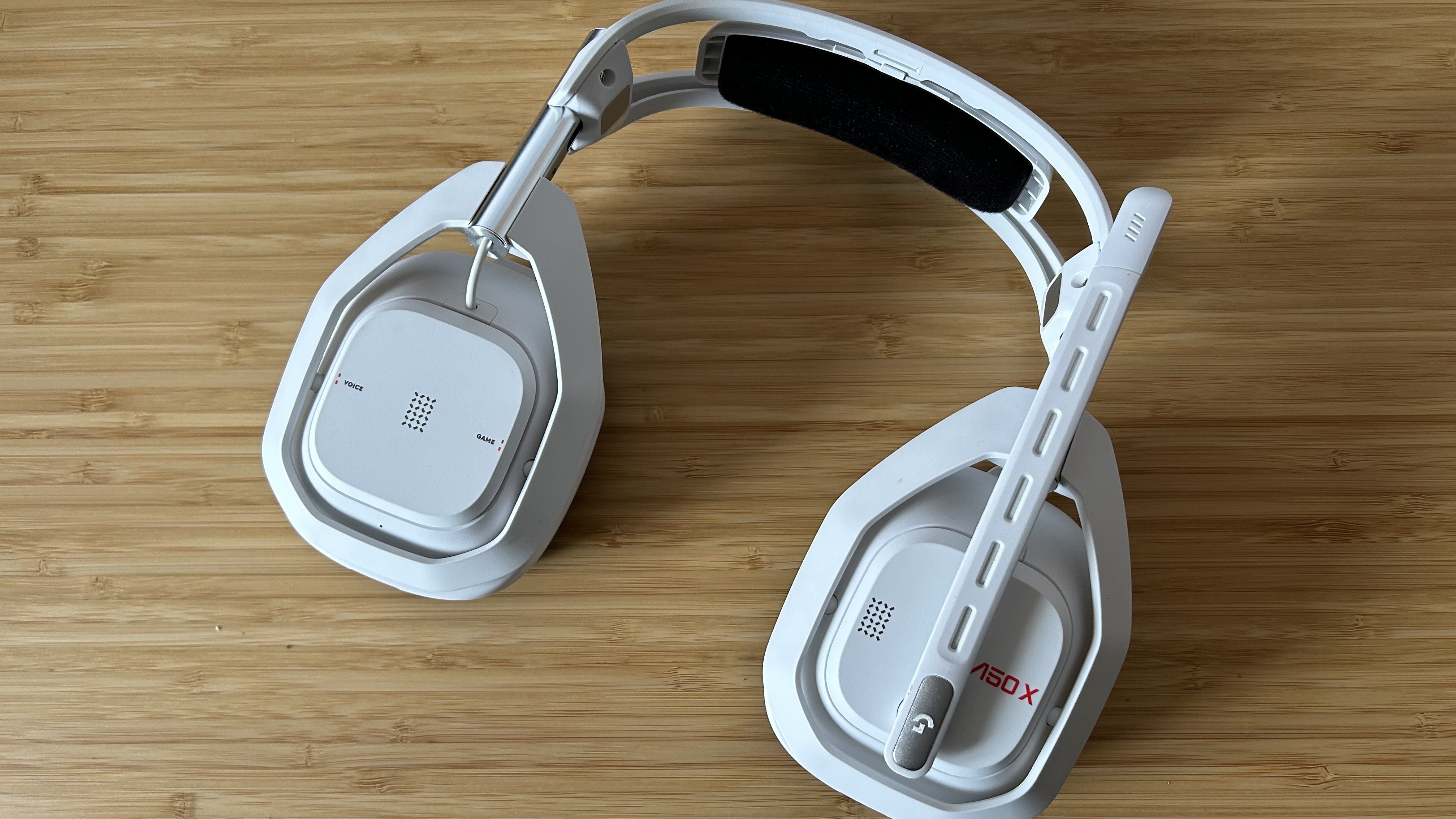
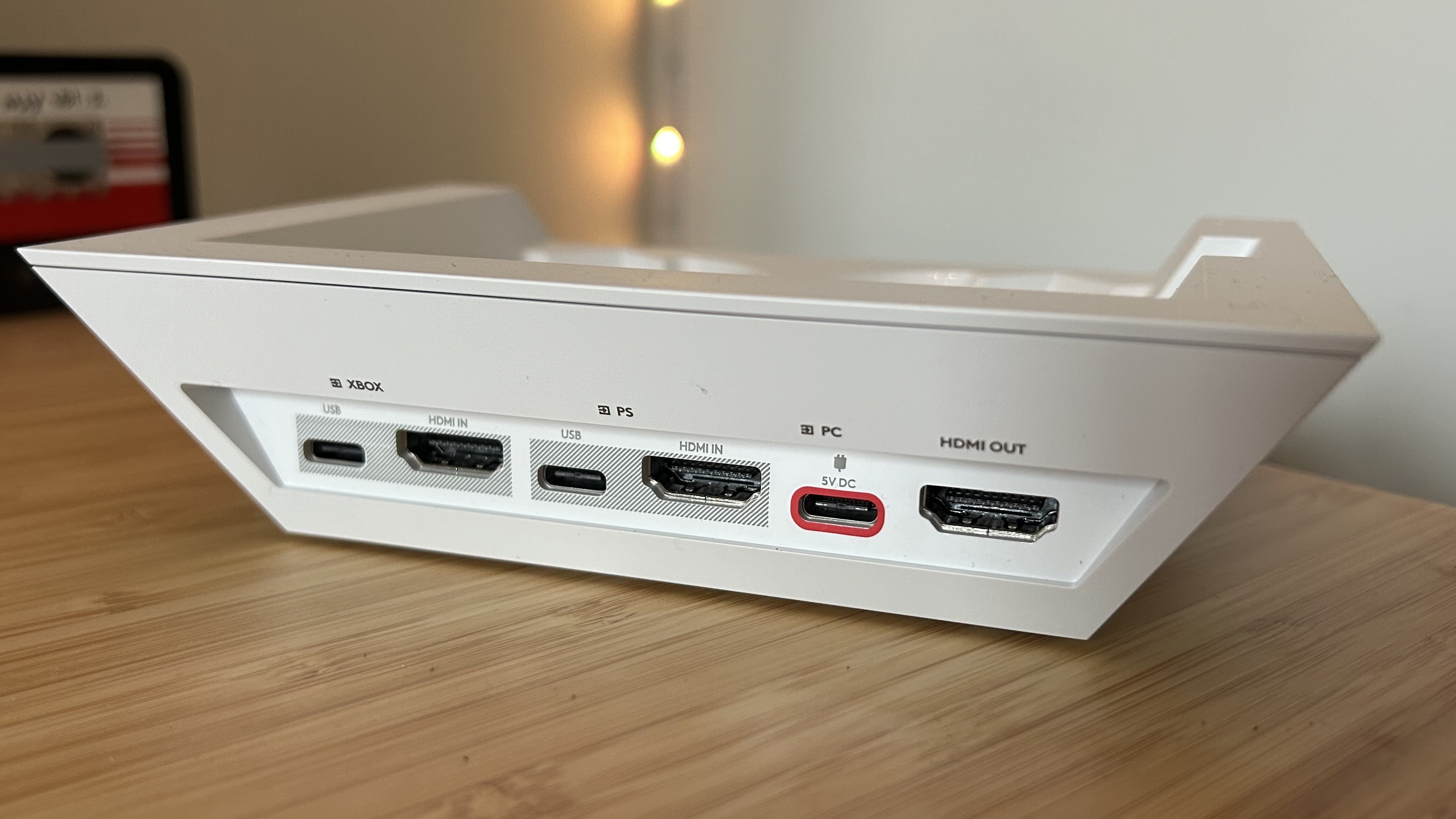
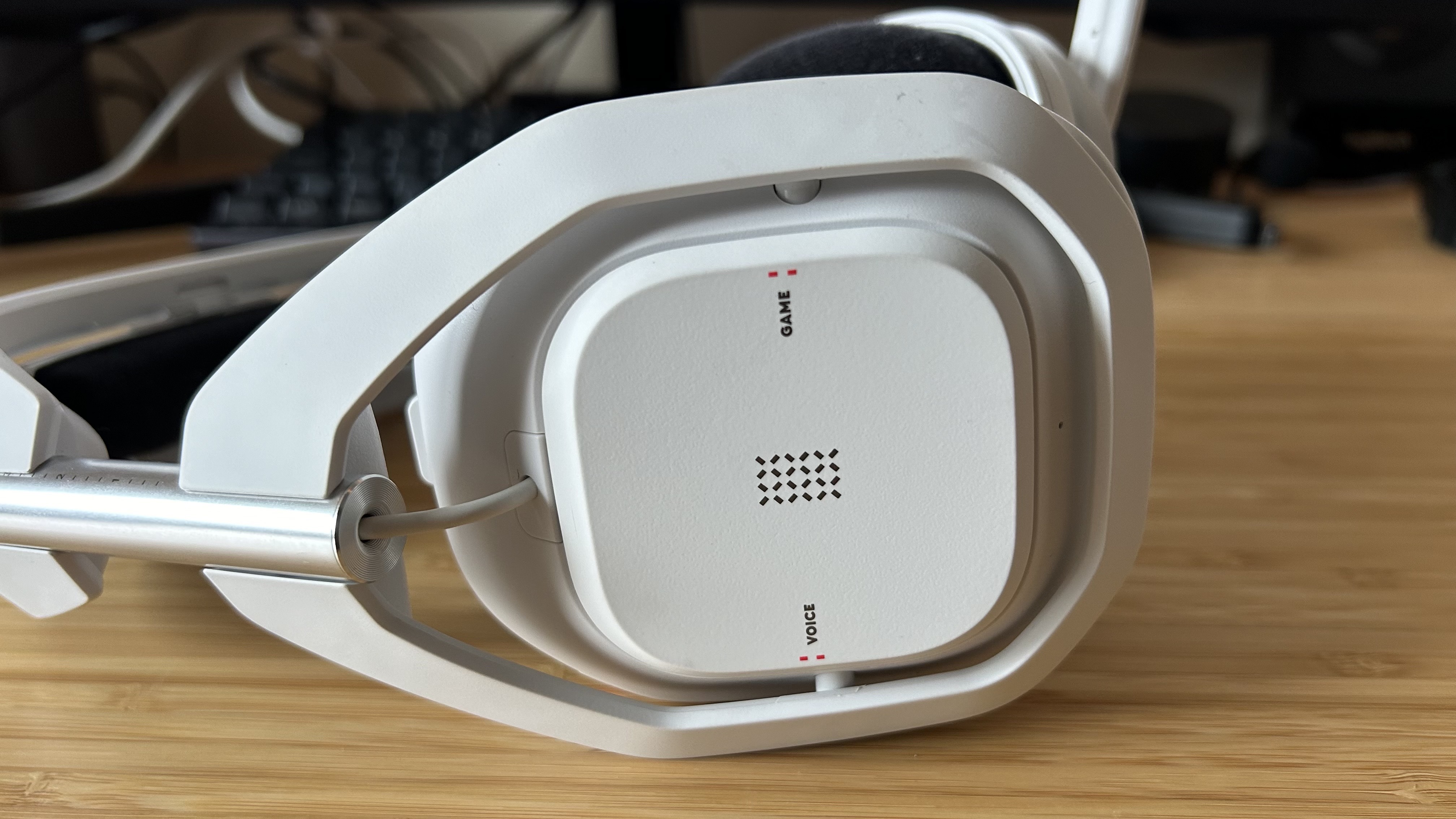
Specifications
Reasons to buy
Reasons to avoid
After a brief hiatus from new releases, Logitech and Astro brought the A50 X to market right at the end of 2023. While it's still a little difficult to get hold of, the unique HDMI switcher design makes it an incredible multiplatform gaming headset - especially if you're running both a PS5 and Xbox in the same setup.
✅ You have all your devices in one setup: The A50 X has been designed to work in a setup with PS5, Xbox and PC all sitting pretty together. If that's how you play this is a massive upgrade.
✅ You want to invest in extra features: That HDMI switcher is adding some cash to the final price tag, but it's a lifesaver for those regularly hopping between consoles.
❌ You regularly travel with handhelds: If you're after an all-in-one headset for on the go use as well as home play, this isn't it. The headset itself doesn't have Bluetooth functionality so you'll be investing in an extra alternative if you want to take things on the road.
❌ Noise canceling is a priority: Unlike the SteelSeries Arctis Nova Pro Wireless, the Astro A50 X doesn't have active noise cancellation. At this price you can easily factor such a feature into your budget with alternatives, though.
Design: This is the Astro we all know and love and very little has changed from a design perspective. You've still got those clean angular lines and large cylindrical headband sliders, as well as that classic geometric base station. The Astro A50 X is available in either black or white, but the white version we tested offers a particularly crisp aesthetic, without picking up smudges or dirt.
This is mostly a plastic construction but everything feels solid in the hand. Each cup rotates to sit flat on a surface, which makes for excellent positioning on the head and, combined with well-padded, though slightly warm, cushions, you've got long lasting comfort as well. The soft material pads can be magnetically removed from the main headset and swapped out for cooler leatherette options as well.
Features: The Astro A50 X offers one feature that no other gaming headsets on the market can - an HDMI switcher baked right into the base station. You'll be matching up a serious number of HDMI 2.1 cables, but once everything is plugged into the back, a simple tap on a headset button swaps both your audio and video between PlayStation and Xbox. Not only that, but your full 4K 120Hz signal is kept intact to boot. That's a seriously handy way of navigating the old difficulties between PlayStation and Xbox wireless compatibility - even if it does leave PC in the dark a little with its USB-A or DisplayPort limitations.
Elsewhere, you've got all the controls you'll need on each side of the headset, including a chat mix rocker than spreads across the whole right side. Logitech's Lightspeed connection makes for a super reliable experience and widespread coverage, and spatial audio on PC and Xbox, with Dolby Atmos included, is nice to have as well.
Performance: Those graphene drivers are pulling some serious weight here, this is fantastic audio quality. With a particularly clean sound across all ranges, but most notably in lower bassy tones, and excellent balancing between heavier effects and lighter soundtracks and dialogue, the Astro A50 X boasts phenomenal sound quality. Not only that, but there's a super clear microphone topping it all off.
Verdict: The Astro A50 X isn't going to be for everyone, but if it wasn't for the practicality issues in a split setup (say with consoles in one room and a PC in another) or the Bluetooth being limited to the base station only it would be knocking on SteelSeries' door for the top spot. Incredibly well detailed audio, unique additional features, and a slick, comfortable form factor make this a must-see. for more.
Read our full Astro A50 X review for more.
Comfort | 4/5 |
Audio | 5/5 |
Battery | 5/5 |
Microphone | 3/5 |
Versatility | 3/5 |
Build quality | 4/5 |
The best gaming headset for PC
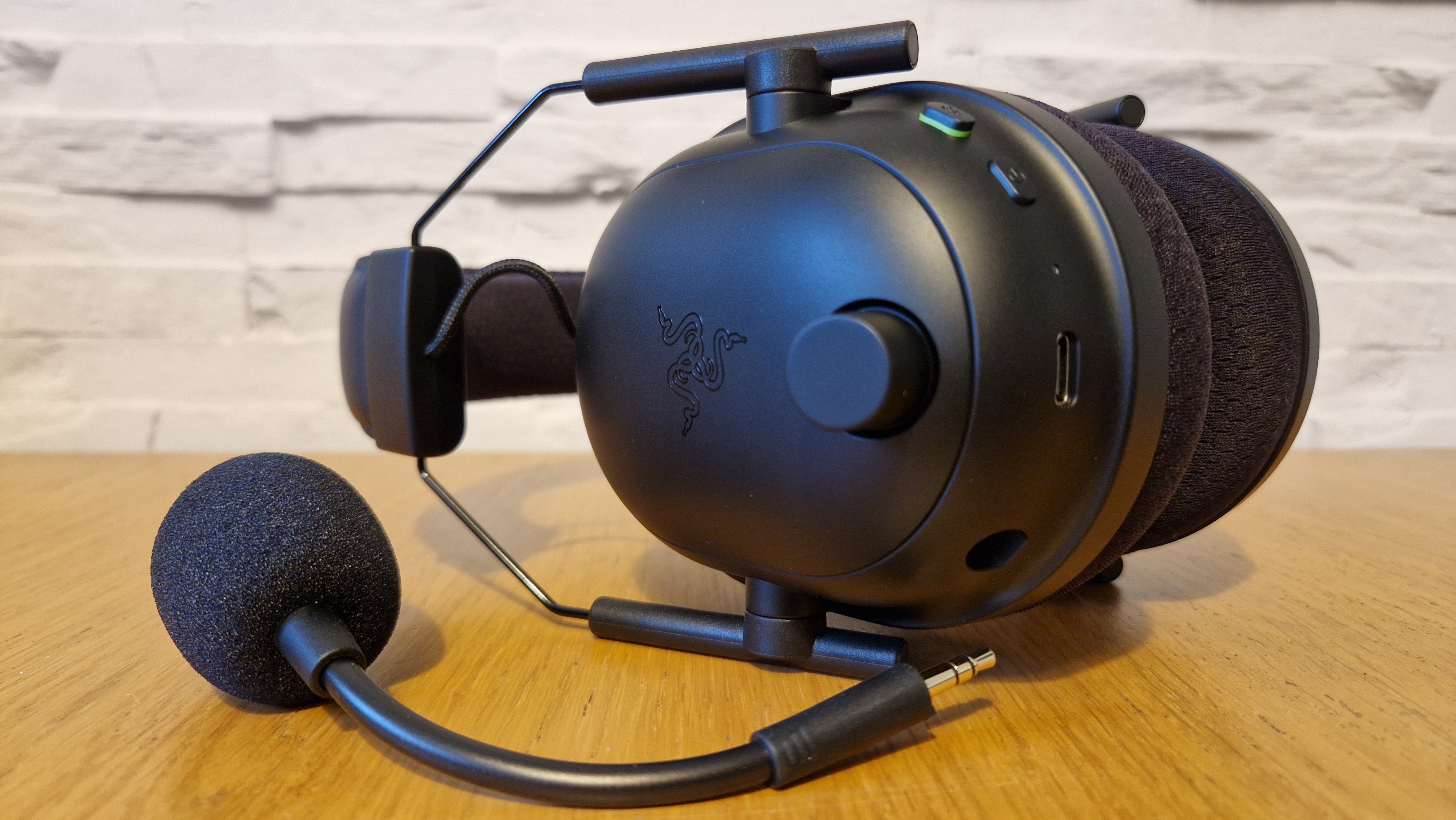
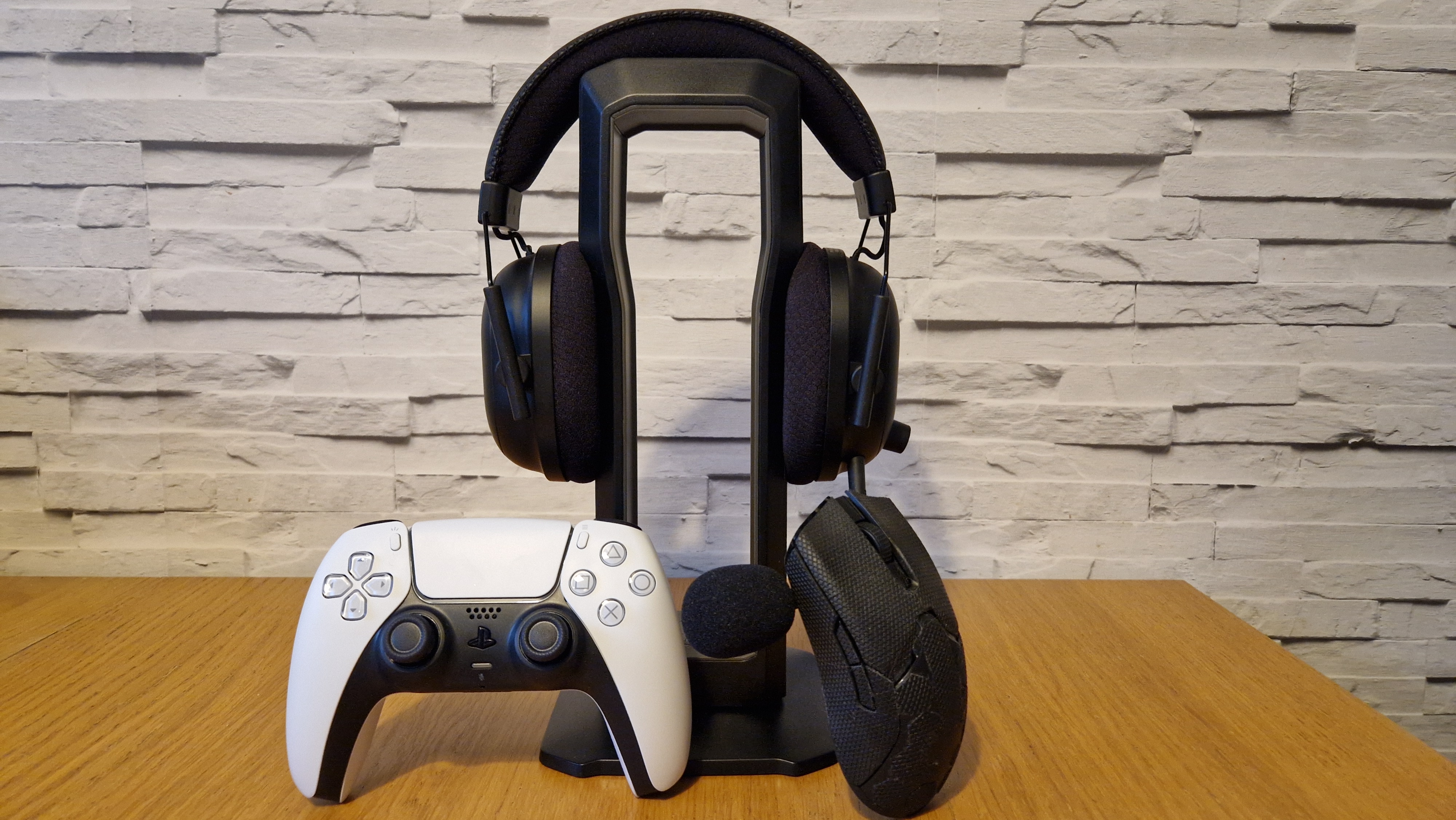
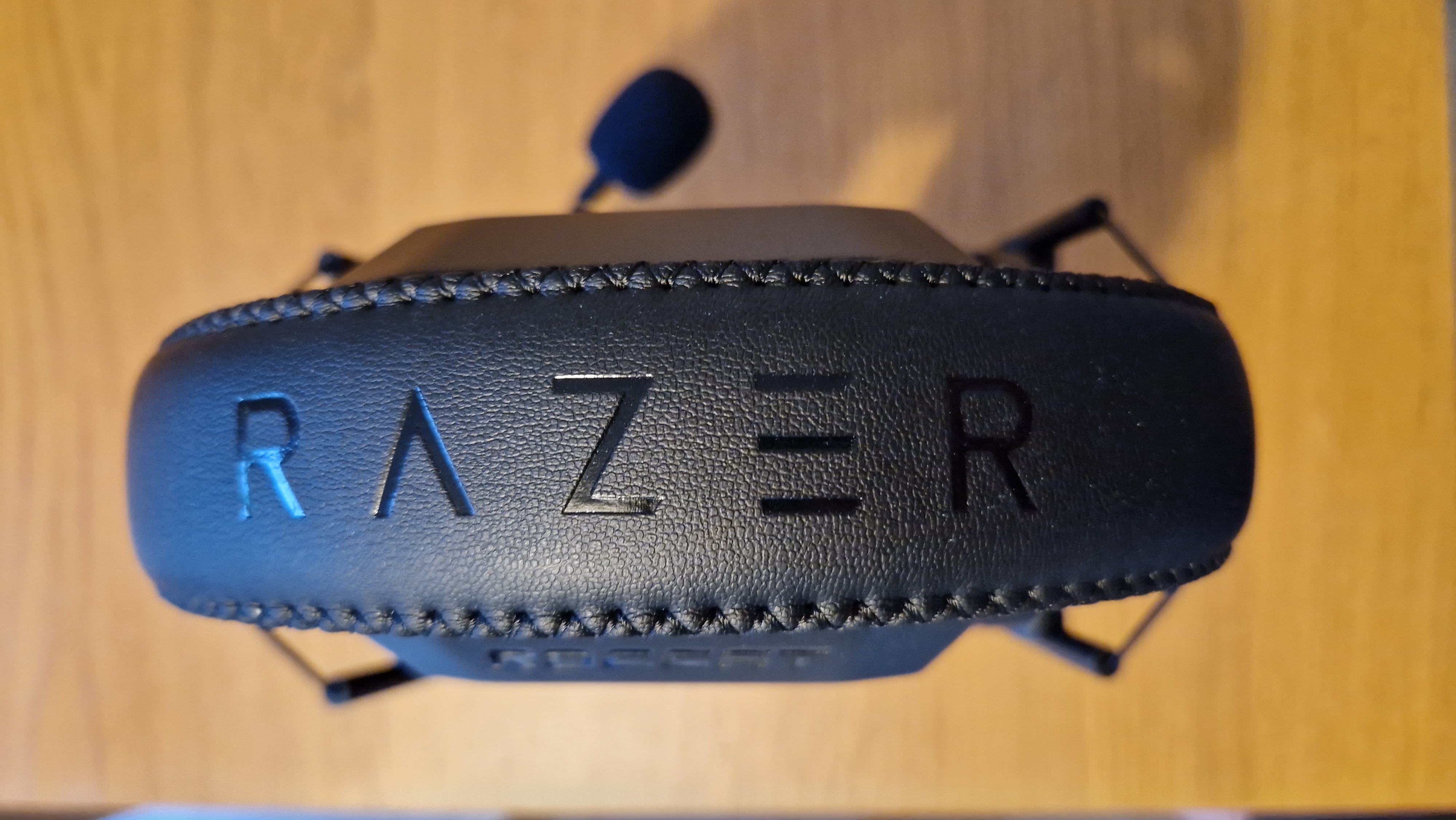
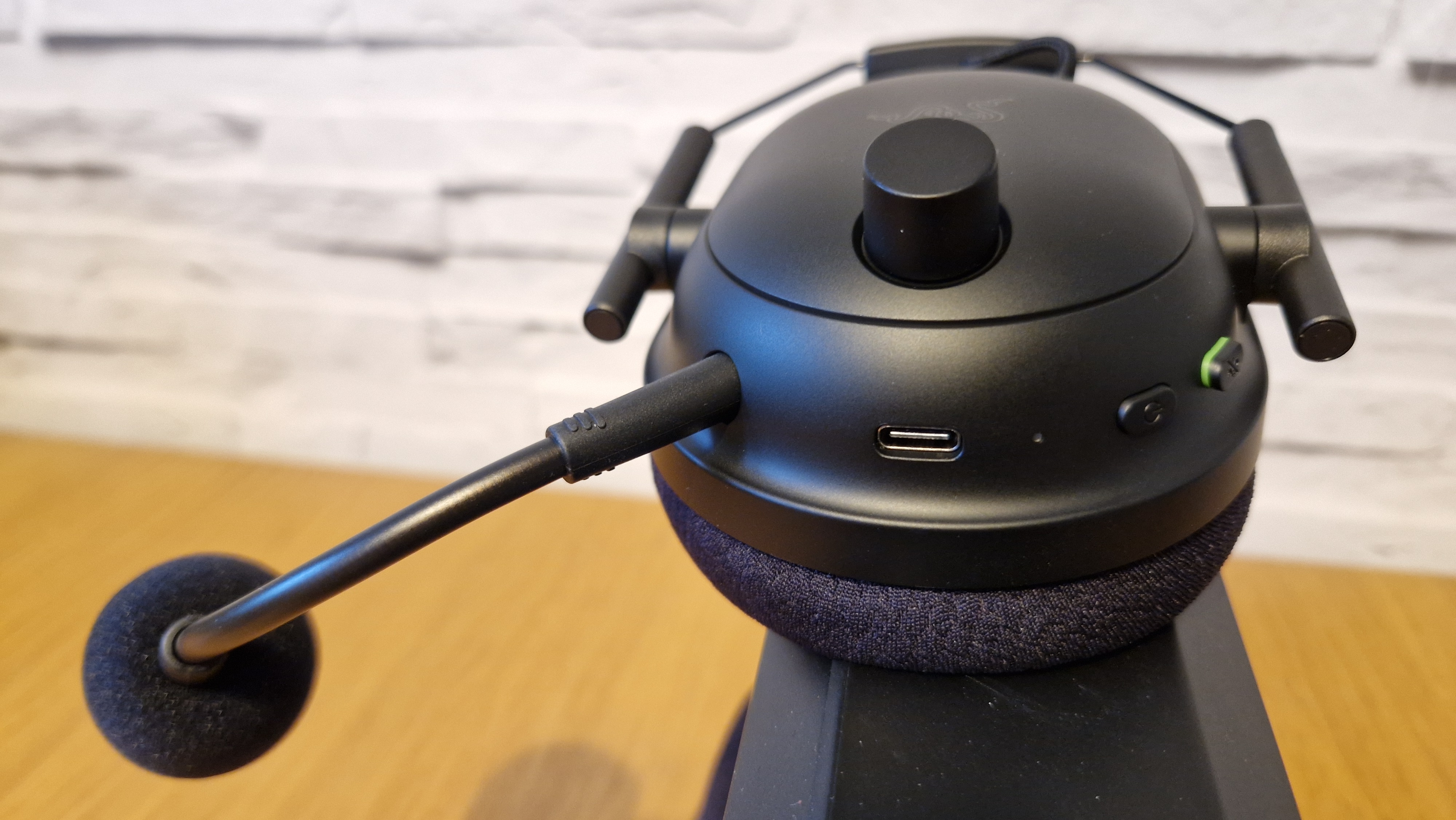
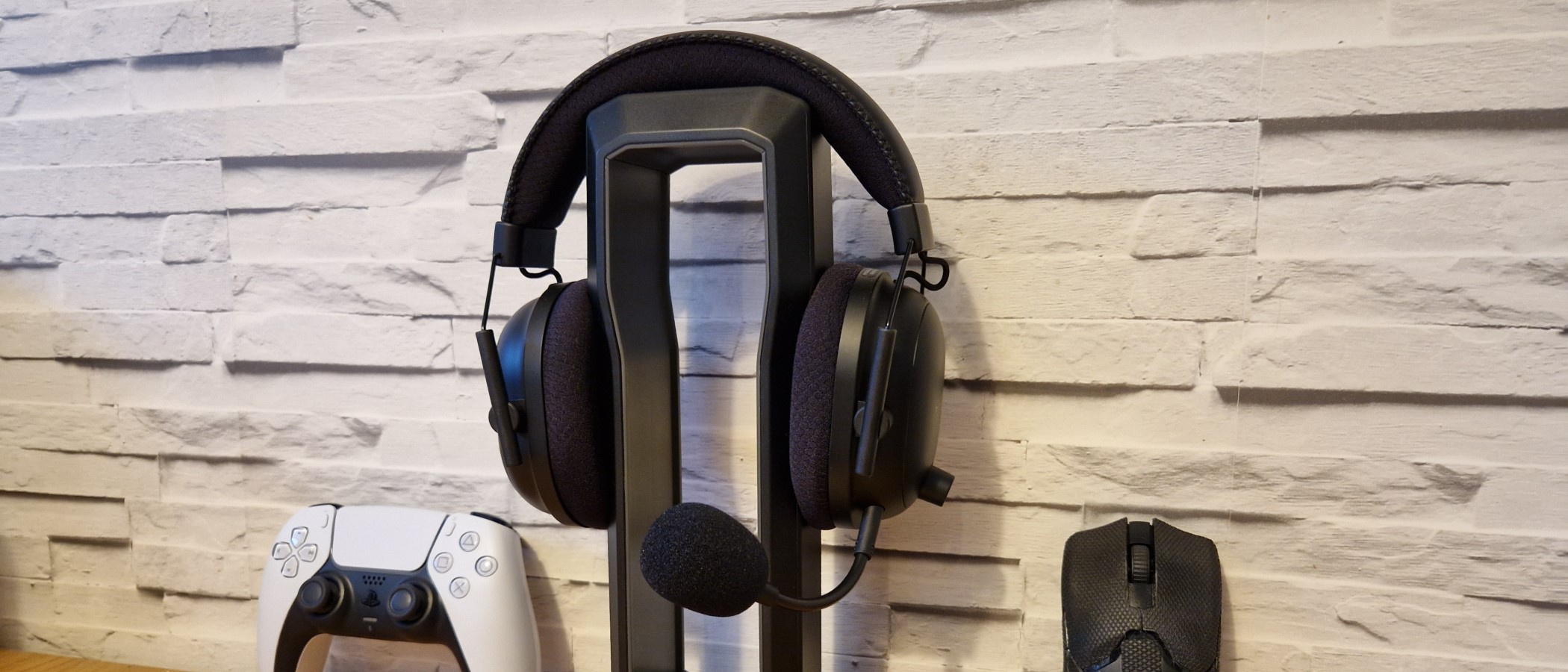
Specifications
Reasons to buy
Reasons to avoid
Looking for a headset to see you through online matches with a crystal clear mic and excellent directional audio? The Razer BlackShark V2 Pro is our top pick for PC players. This is a 2023 reinvention of a classic, but there's more going on here than a new release date. With plenty of upgrades all baked into that classic chassis, this is easily one of the best gaming headsets on the market.
✅ You mostly play with chat: This mic is the best we've had our hands on so far - our teammates said it sounded like we were in the room with them. Whether you're playing online or dabbling in streaming, it doesn't get much better than this.
✅ You use PC and PS5: For all its benefits, this isn't a multi-platform headset, so it's only for those looking to play on PS5, PC, Nintendo Switch, or mobile.
❌ You need headphones for commuting: With no active noise cancellation, we wouldn't recommend the BlackShark V2 Pro for those looking to double up their gaming headset as a pair of headphones. Still, if you're in a pinch that Bluetooth connectivity and long battery life will see you through.
Design: The Razer BlackShark V2 Pro carries a near identical form factor and aesthetic to previous iterations, but we loved the helicopter pilot build back then as we still do today. From the all-black paintjob to the classic Razer matte finish this is a slick looking piece of kit. The steel headband keeps everything together, and while we did notice some slipping of the sliders when putting the headphones on it was never a concern in-game. With memory foam cushions and a lightweight footprint, the BlackShark V2 Pro manages to blend into the background nicely during longer sessions, with no discomfort.
Features: When we tested the BlackShark V2 Pro, the biggest feature to stand out was the microphone. Razer has put some serious grunt into this HyperClear pickup, boosting the sampler rate from 16kHz to 32. In practice, that gave us incredibly clear chat with super rich voice quality.
It's so impressive, teammates remarked on the high quality mixing and even called it podcast worthy. That's why this is such a good headset for online play, but the mic isn't everything. You're also getting 70 hours of battery life (up by over half from the 24 hours in the previous model) as well as onboard audio profiles sitting directly on the headset itself. That means you can use Synapse-generation EQ settings across both PC and PlayStation - a rarity in this space.
Audio: The Razer BlackShark V2 Pro even managed to excel in the audio category, while already offering excellent design and a fantastic set of features. Dawn of War III's combat was well articulated throughout, and even Stalker's older audio was elevated to current-gen levels. That spooky atmosphere was excellently represented, all while being cut through with punchy gunfire. Locating enemies in Apex Legends was crisp and easy as well.
Verdict: The mic clarity and precise audio quality make the Razer BlackShark V2 Pro the best PC headset in our books. At $199.99 / £199.99 it's not a cheap device, and if you're not concerned about a wireless connection or a high quality microphone that price tag isn't going to make much sense. However, PC and PS5 players looking for a gaming headset that actually feels like a next generation device will be well positioned here. for more.
Read our full Razer BlackShark V2 Pro (2023) review for more.
Comfort | 4/5 |
Audio | 5/5 |
Battery | 4/4 |
Microphone | 5/5 |
Versatility | 3/5 |
Build quality | 5/5 |
The best gaming headset for consoles
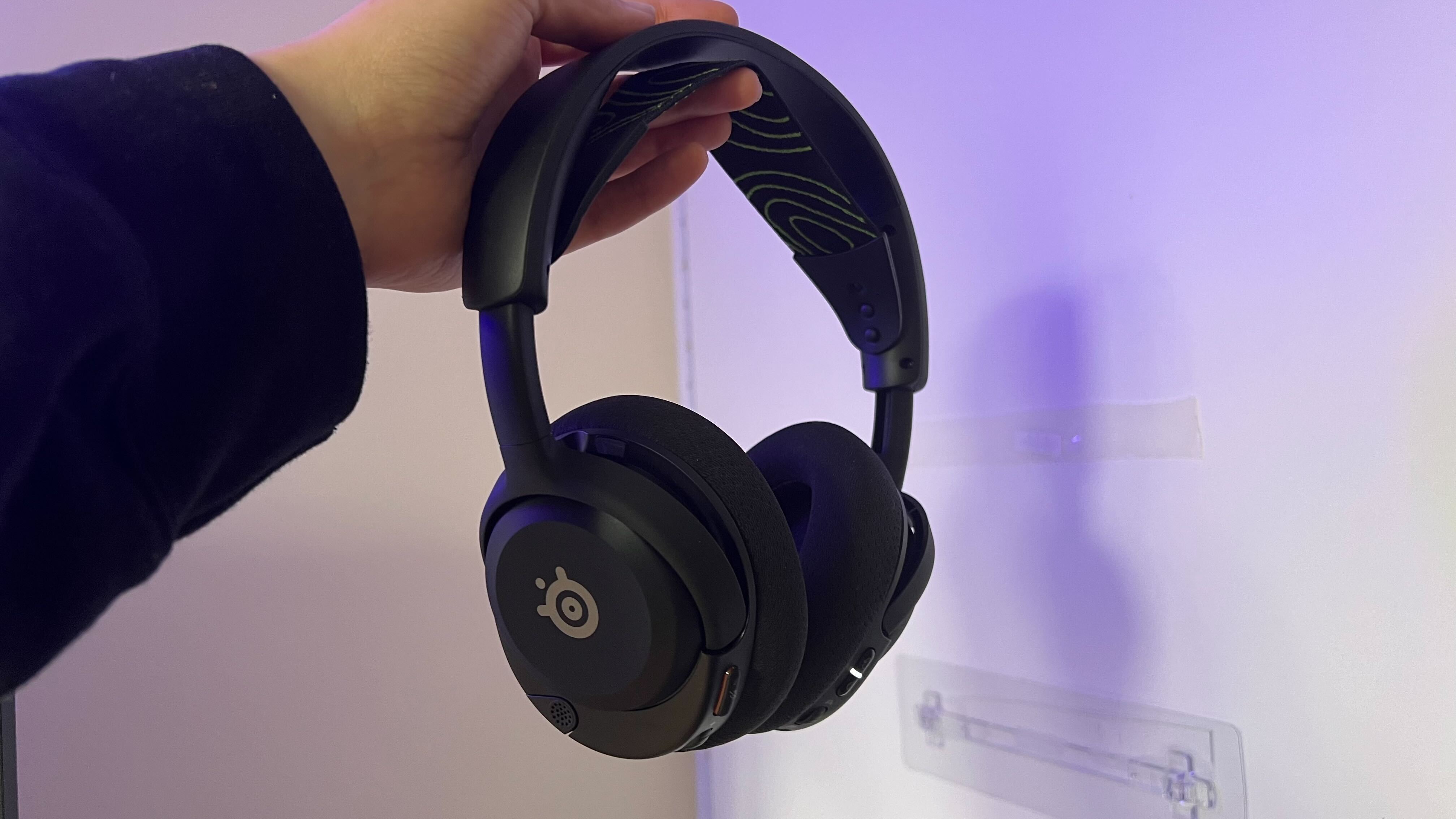

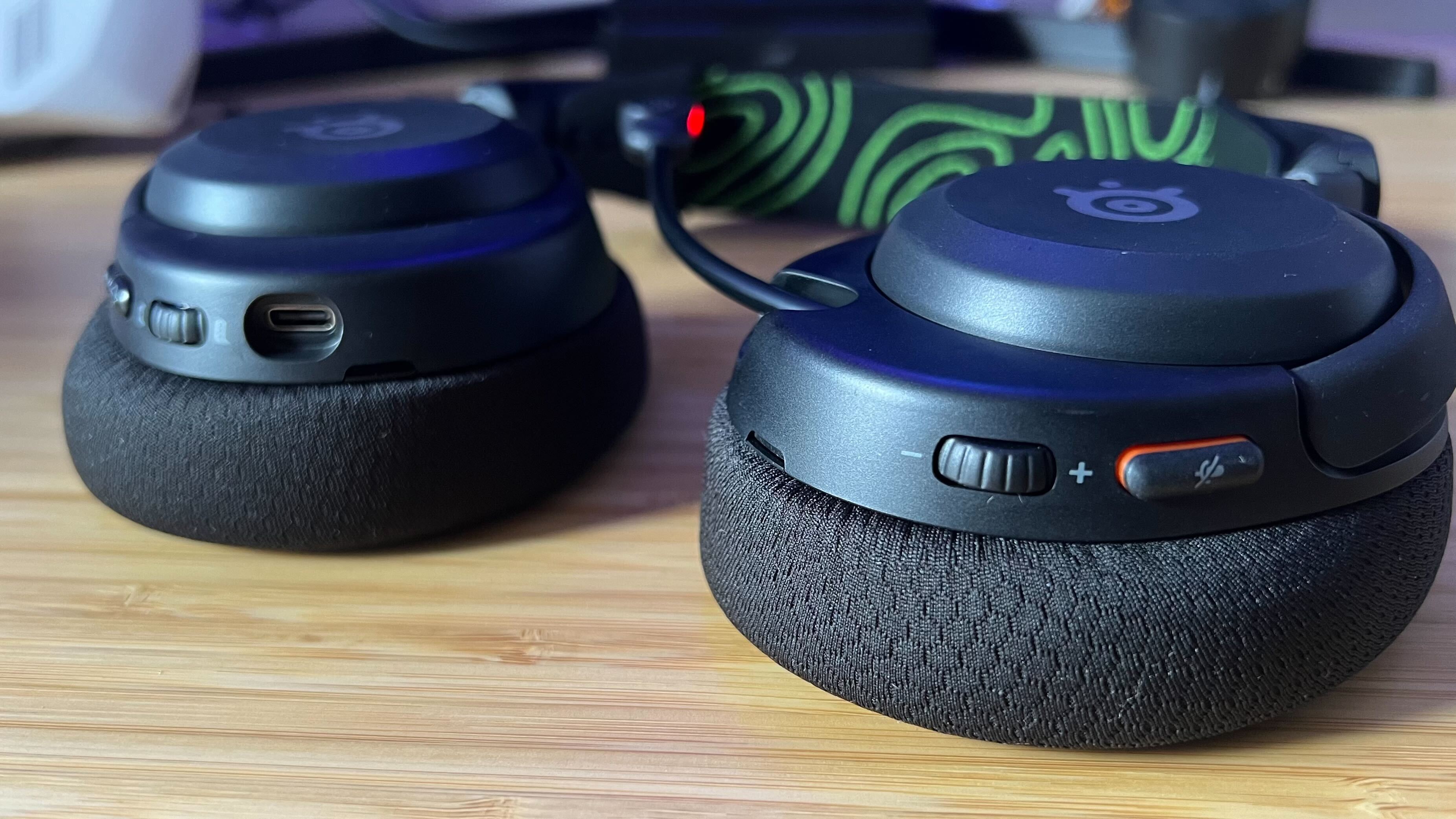
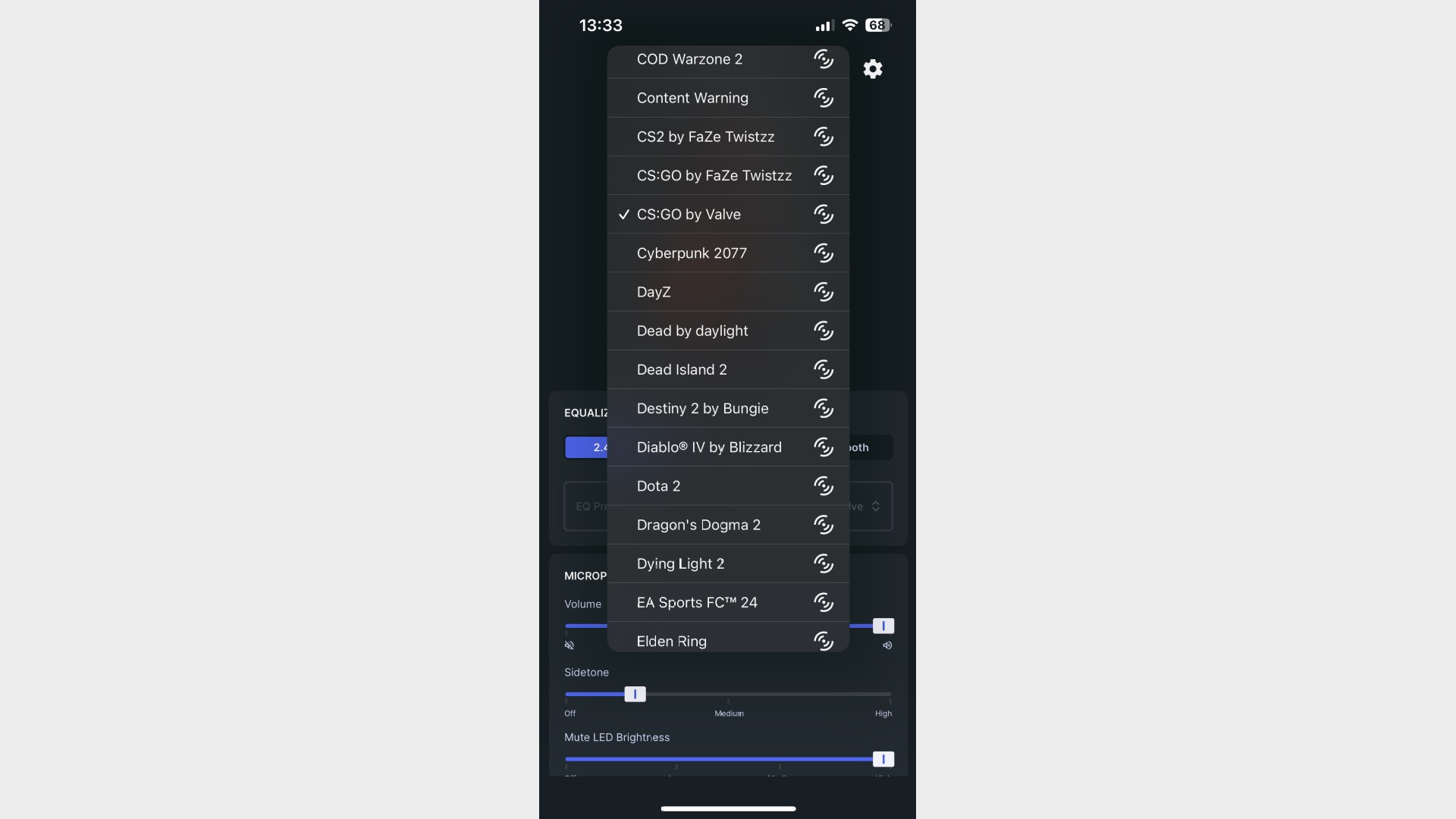
Specifications
Reasons to buy
Reasons to avoid
The SteelSeries Arctis Nova 5 Wireless is the latest headset in the brand's most recent range, but if offers something slightly different for PS5 and Xbox users. Aside from being a fantastic set of cups in its own right, the companion app allows for a massive range of pre-developed audio presets tuned by developers, eSports competitors, and sound engineers. That's a new dawn for EQ tweaking on console, making it our favorite gaming headset for PlayStation and Xbox fans.
✅ You want audio tailored to your games: There are a few headsets that offer EQ presets via a companion app on console, but the Nova 5 Wireless is the only one to pack this number of high quality profiles in one place.
✅ You need durability: Headsets can take a beating, especially if you're taking it on the road with you. The Nova 5 Wireless is particularly well put together, and nicely flexible in its design, which gives us every confidence in its long term durability.
❌ You want more fine-tuned EQ options: The companion app is great, but it doesn't allow you to fine-tune your settings with full sliders. This is still achievable when connecting to SteelSeries' software on PC, but it's not quite as easy as using the presets.
❌ Mic quality is a priority: The mic in here is solid but it's not as strong as the BlackShark V2 Hyperspeed listed above, which comes in at the exact same MSRP.
Design: The SteelSeries Arctis Nova 5 Wireless speaks the same design language as the rest of the range. These are smaller, circular cups but they still hug the ear nicely with plush cushioning preventing any kind of pinching. This was particularly well received in our testing, creating a solid seal but with comfort lasting all the way through longer sessions.
That's supported by a ski-band running under the main plastic headband at the top, adjustable via both a slider and toggles. The entire device is made from a high-quality, malleable plastic. That means no creaks when manipulating the headband, even to extreme levels, and there are no points of weakness that gave us any concerns during testing.
Features: Of course, the official Nova 5 companion app is a major benefit. It packs pre-made audio profiles tailored to everything from Fall Guys to CS:GO, Fallout to Apex Legends. Pairing between the headset and your iPhone (or Android) is quick and easy, we never had any frustrating re-pairing issues during testing. You can set different profiles for a Bluetooth or 2.4GHz connection and also control certain microphone settings in here as well.
Aside from that, the Nova 5 Wireless also features more onboard controls than the Nova 4 before it, with a chat mix dial and Bluetooth quick switcher button bundled in with your standard volume, mic mute, and power options. The excellent extendable microphone is also present, tucking neatly away into the headset when not in use. Noe that there's no wired connection available here so you're fully reliant on those cordless options.
Performance: Straight out of the box you're still getting that fantastic SteelSeries audio quality, with excellent balancing and particularly strong detail in the lower ranges (at the expense of raw power in certain situations). However, the quality of those individual presets surprised us during testing. It's easy to make a profile for competitive FPS titles these days, but allowing certain environmental sounds and echoes to shine in Baldur's Gate 3 or giving special attention to item sounds and engines in Mario Kart 8 Deluxe is a slightly more difficult task. The SteelSeries Arctis Nova 5 Wireless attacks a massive number of games with their own dedicated audio profile - and some are more useful than others - but generally does so with fantastic results.
Verdict: The SteelSeries Arctis Nova 5 Wireless sits at the lower end of the mid-range price tag, but still packs incredible performance, unique features for console users, and a longstanding commitment to comfort and durability. We'd recommend picking up the 5X model for the best compatibility with both PS5 and Xbox Series X. for more.
Read our full SteelSeries Arctis Nova 5 Wireless review for more.
Comfort | 5/5 |
Audio | 4/5 |
Battery | 3/5 |
Microphone | 5/5 |
Versatility | 4/5 |
Build quality | 5/5 |
The best gaming headset for Nintendo Switch
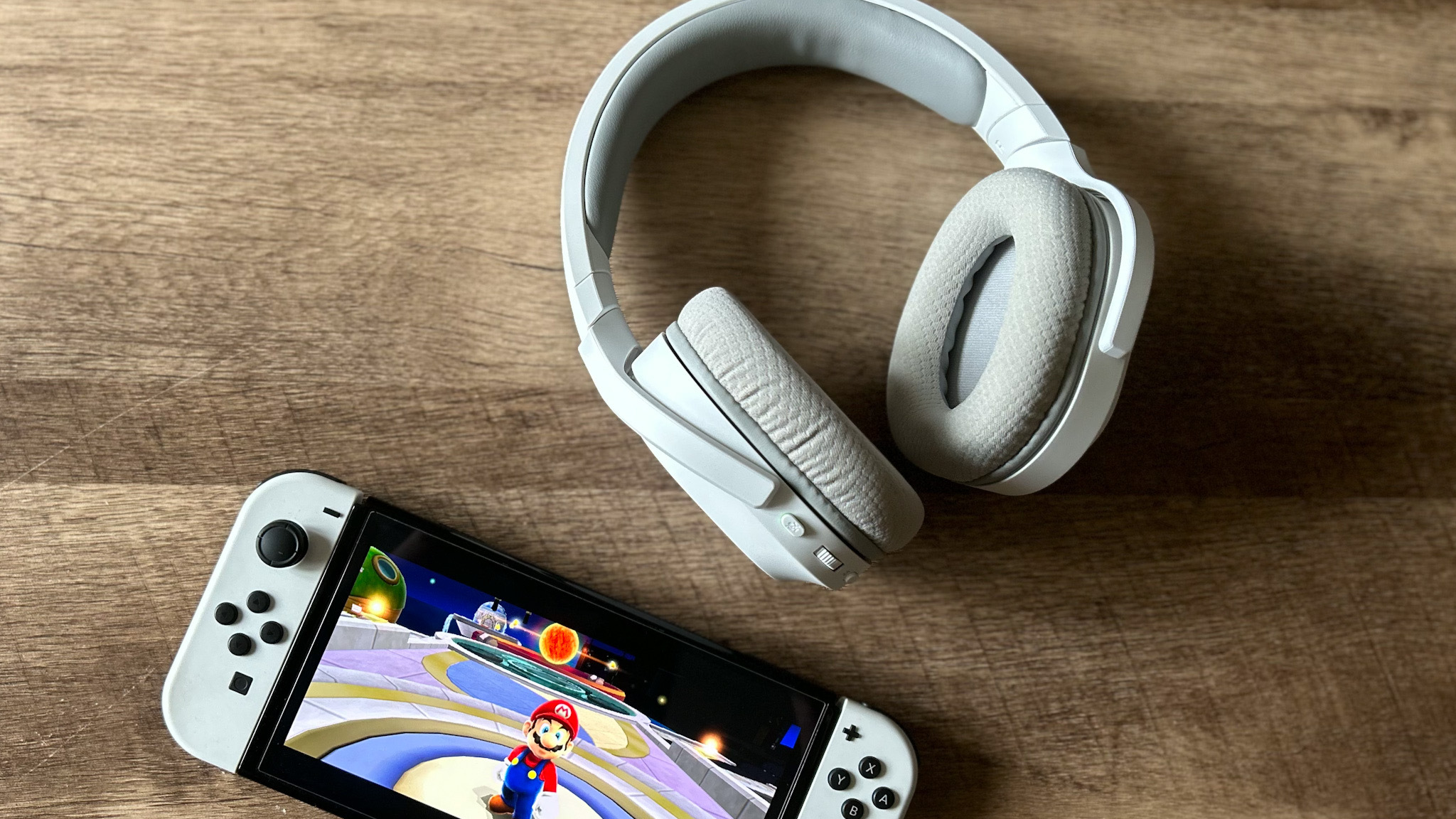
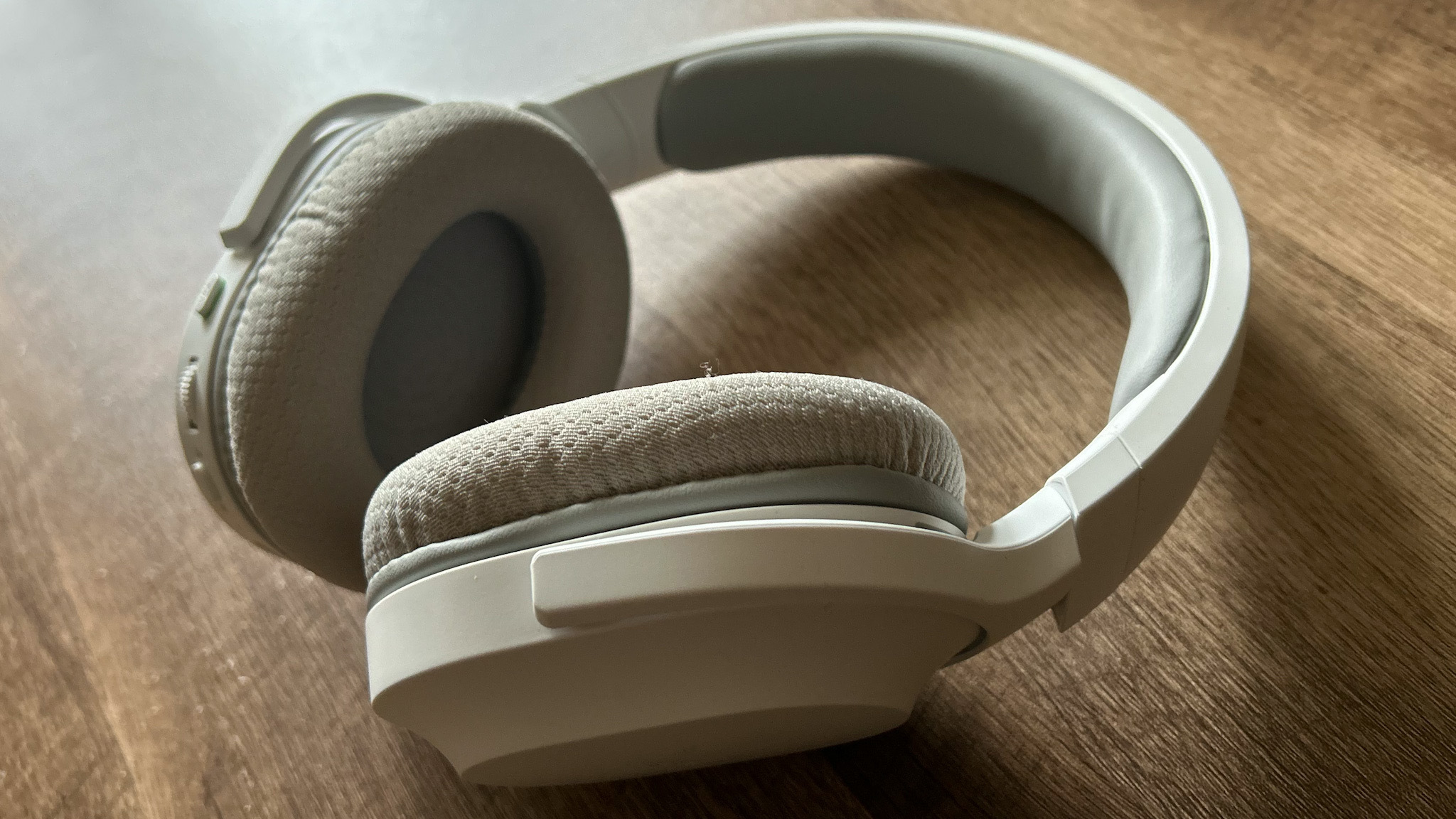
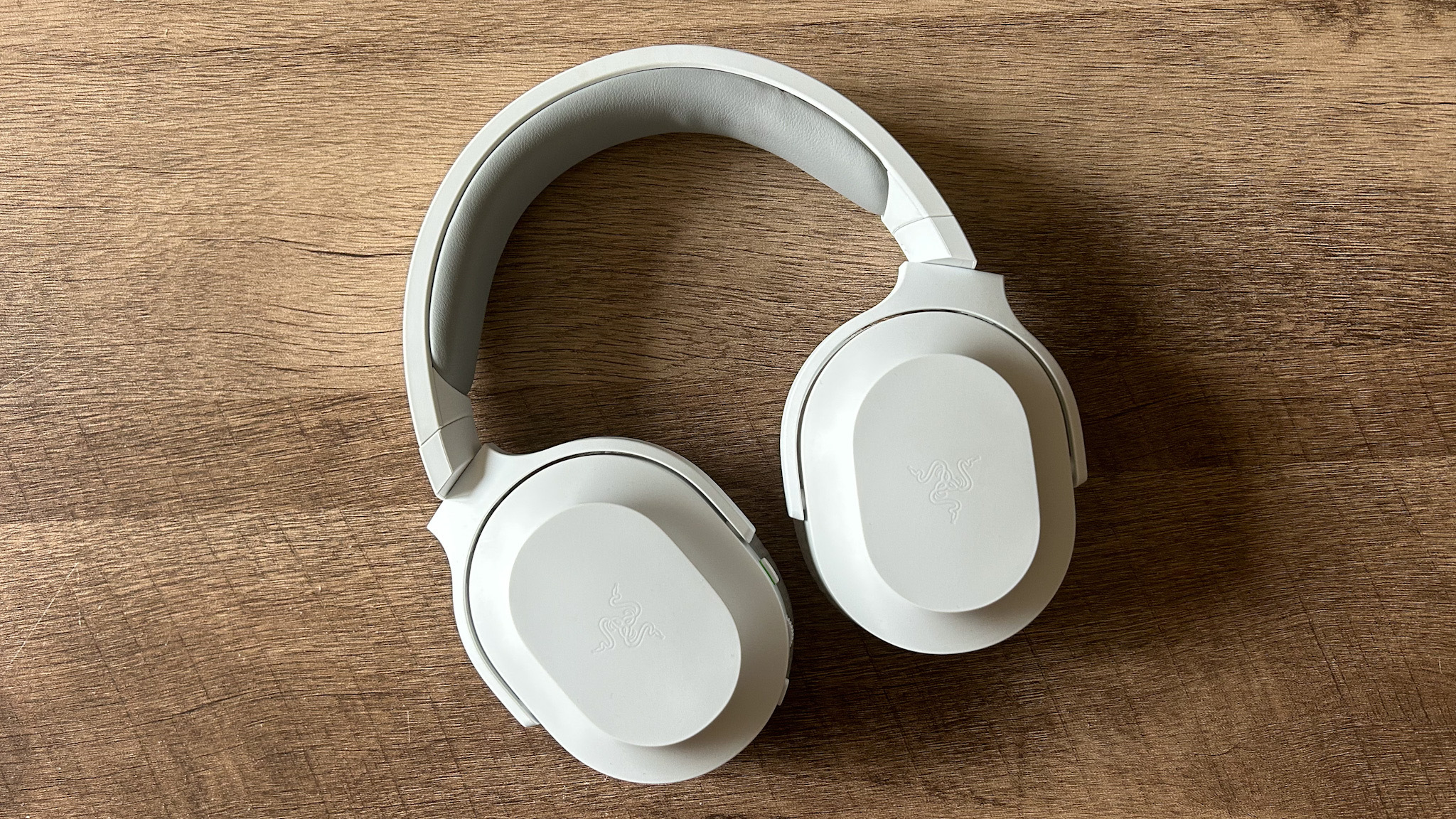
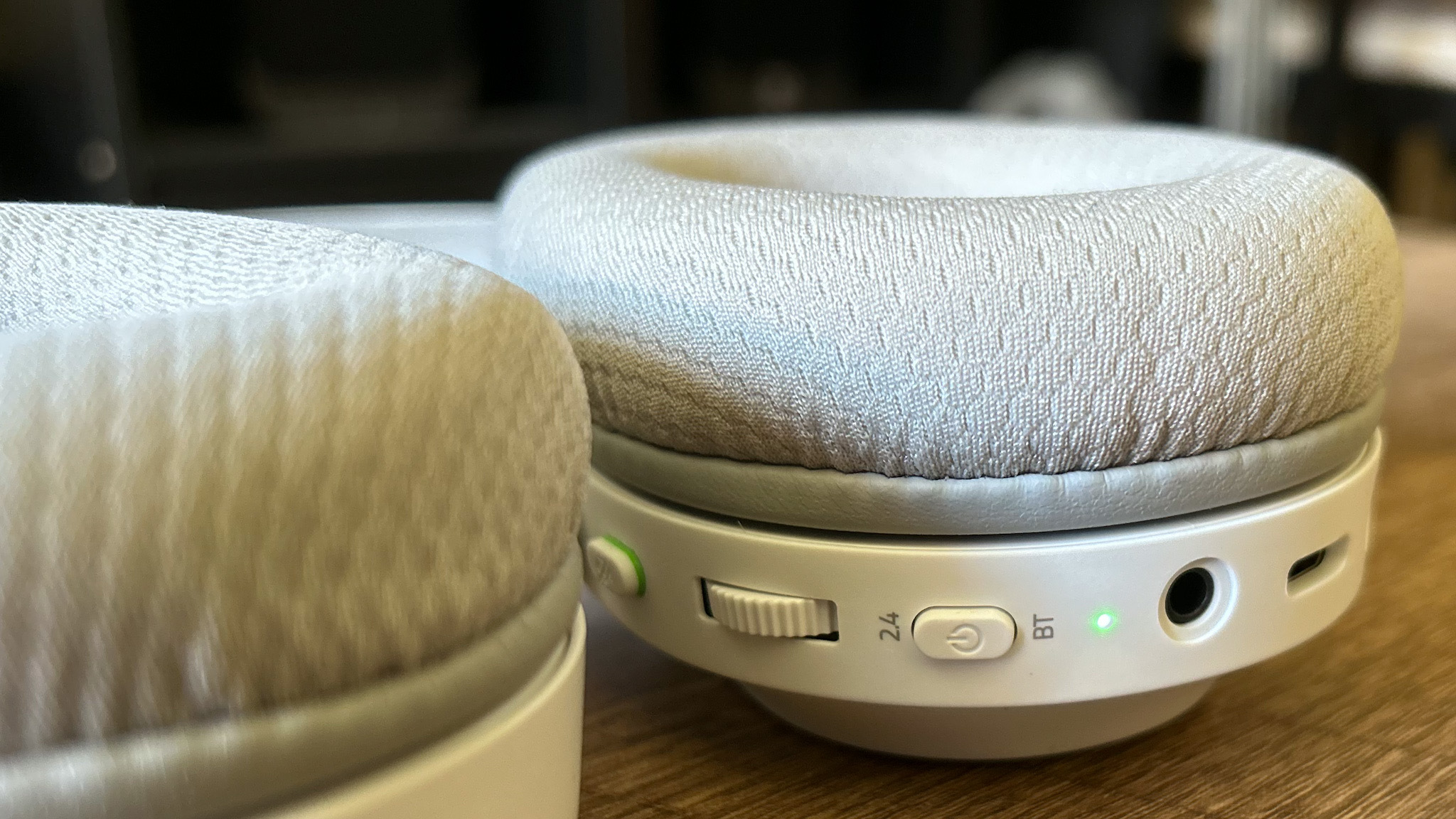
Specifications
Reasons to buy
Reasons to avoid
At $99.99 / £99.99, the Razer Barracuda X is a rare beast; a wireless headset with an excellent sound quality and plenty of extra features for under $100. Anyone on the hunt for a cost effective set of cups for their cheaper console will be well served here. However, the simple plug and play system will see PC and PlayStation players through as well.
✅ You play in handheld mode on the go: This is where the Razer Barracuda X is most at home. With its comfort, ease of wireless connection, and excellent battery life, it's the perfect headset to take on the road.
✅ EQ settings don't interest you: If you don't want all the faff of setting up the perfect equalizer balance, the plug and play nature of the Barracuda X is perfect. Of course, you can still quickly tweak in the mobile app - but there's no intimidating dials and levels to concern yourself with here.
❌ Software support is important: If you do want to tinker with your audio balance, the Razer Audio app is restricted compared to Synapse. The Barracuda X doesn't support Synapse 3, so you are stuck with a watered down set of controls.
❌ You want to fall back on a wired connection: The wired connection isn't powered, so we noticed a significant drop in quality when bringing a cable in to play.
Design: The Barracuda X is contained in a subtle form factor. The oval shaped cups and relatively unbranded aesthetic means this could easily pass for your everyday set of headphones. That's excellent news for anyone after a gaming headset to double up for their commute.
We also found the plush cushioning and longer cup shape to be particularly comfortable - even over long sessions. A breathable mesh fabric keeps things cool on the top, while the metal running along the headband ensures even the swivel hinges feel secure and durable. That all combines to create just the right level of clamp - enough to block out external noise while still leaving plenty of room to breathe.
Features: The latest 2022 Razer Barracuda X improves on the previous 2021 generation in a number of ways. Perhaps the largest draw is the new low-latency Bluetooth connection, allowing for use across a massive range of mobile devices. That, and the fact that it retains its impressive sound quality, long-lasting comfort, and adds an excellent 80 hour battery life, makes it the best gaming headset for Nintendo Switch.
You don't have to rely on the 2.4GHz dongle if you're out and about, and you'll also be able to switch between your phone and console if commuting. That's perfect for the casual Switcher - but the price tag makes things all the more compelling. Razer suggests a 50 hour battery life, and we found that the 2022 Barracuda X not only met these estimates but exceeded them. Of course, this is straight out of the box and with battery degradation that juice is going to start running out faster.
Audio: We found that excellent sound quality of the original model was retained across all platforms. There's an impressive amount of power behind these 40mm drivers, offering a well-balanced sound across everything from Doom Eternal to The Last of Us Part 2. The twinkly melodies of Super Mario Galaxy were given particularly strong attention, with detailing across larger, booming sounds matching those of smaller sound effects well.
You'll find a passable virtual 7.1 surround sound on PC (available only by a separate program, the Barracuda X isn't compatible with Synapse 3 software), offering a basic sense of direction. It's not going to compete with that of the Corsair Virtuoso or Audeze Maxwell, but it's there if you do fancy tinkering on a keyboard. Nintendo Switch players, though, are always going to be limited by the system's stereo sound, which makes the lack of extra tuning features less impactful. Plus, you've always got EQ customization options on the Razer Audio app.
Verdict: You're getting incredible value for money with the Razer Barracuda X. Its plush, breathable materials, long battery life, excellent performance for the money, and flexible wireless connections make it the best Nintendo Switch headset for the majority of users. Most Switch players really don't need all the fancy features of the high-end devices above, and the Barracuda X concentrates its strengths exactly where these players need them to be.
Read our full Razer Barracuda X (2022) review for more.
Comfort | 4/5 |
Audio | 4/5 |
Battery | 3/5 |
Microphone | 3/5 |
Versatility | 5/5 |
Build quality | 4/5 |
The best open back gaming headset
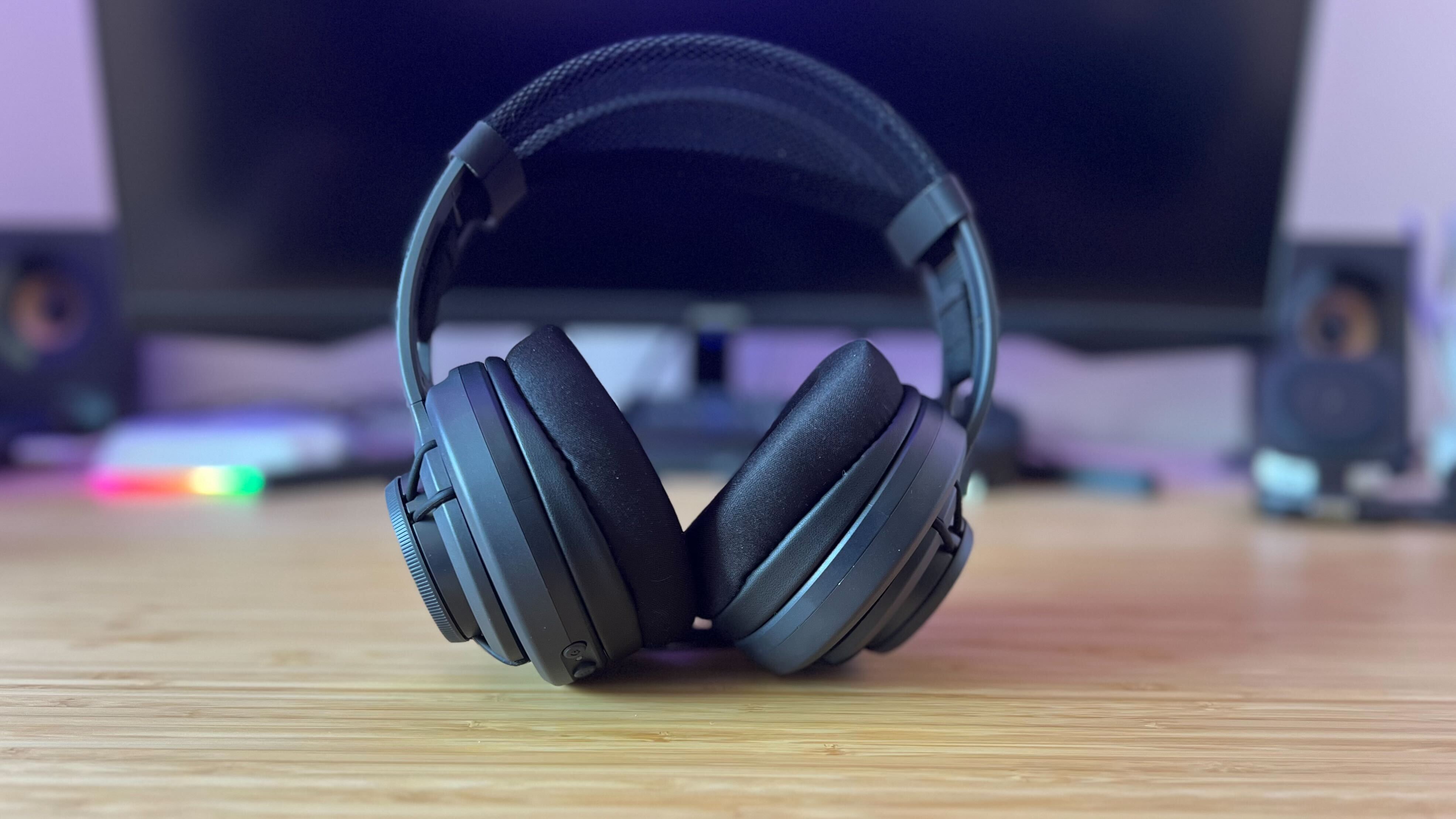
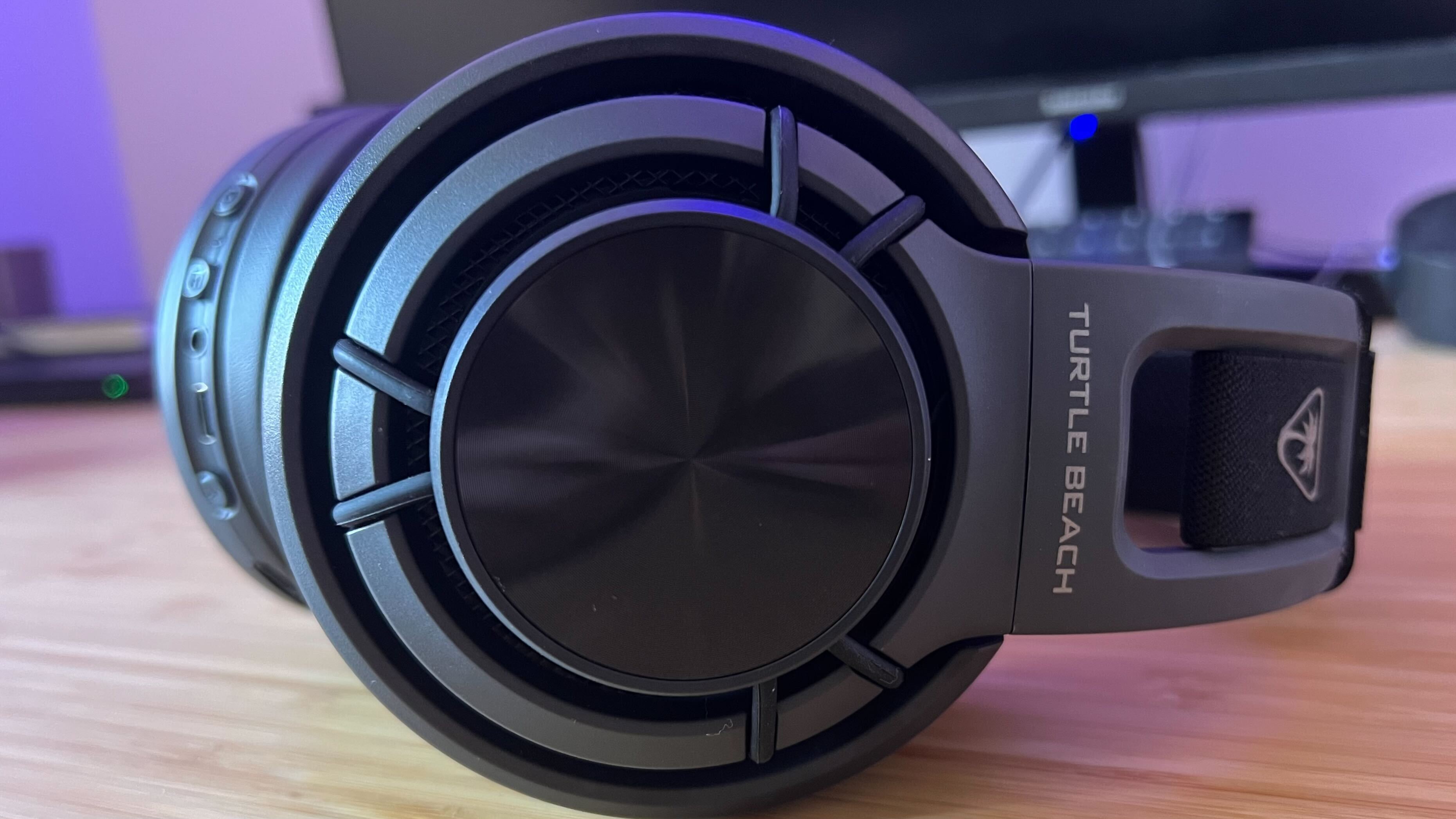
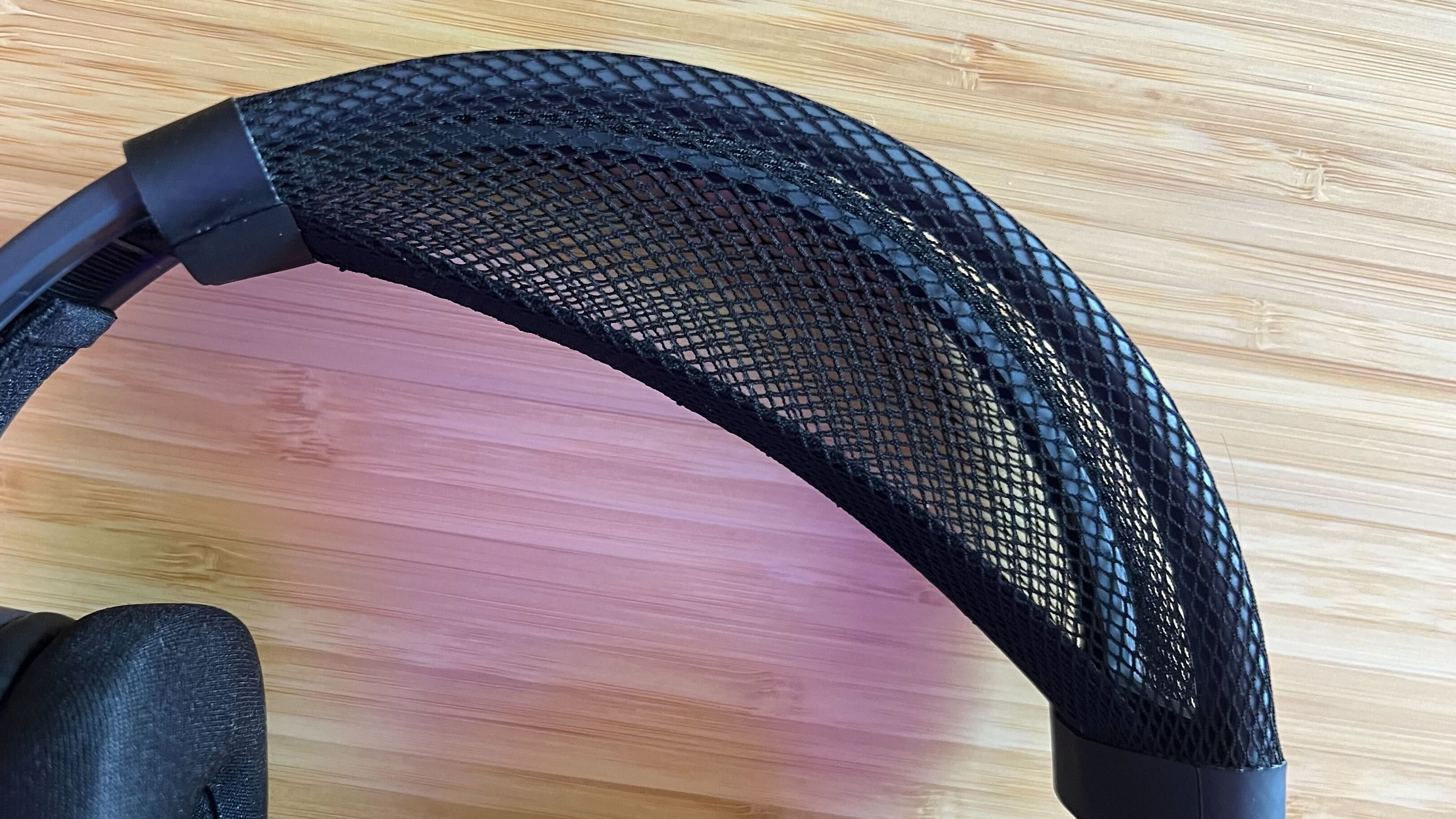
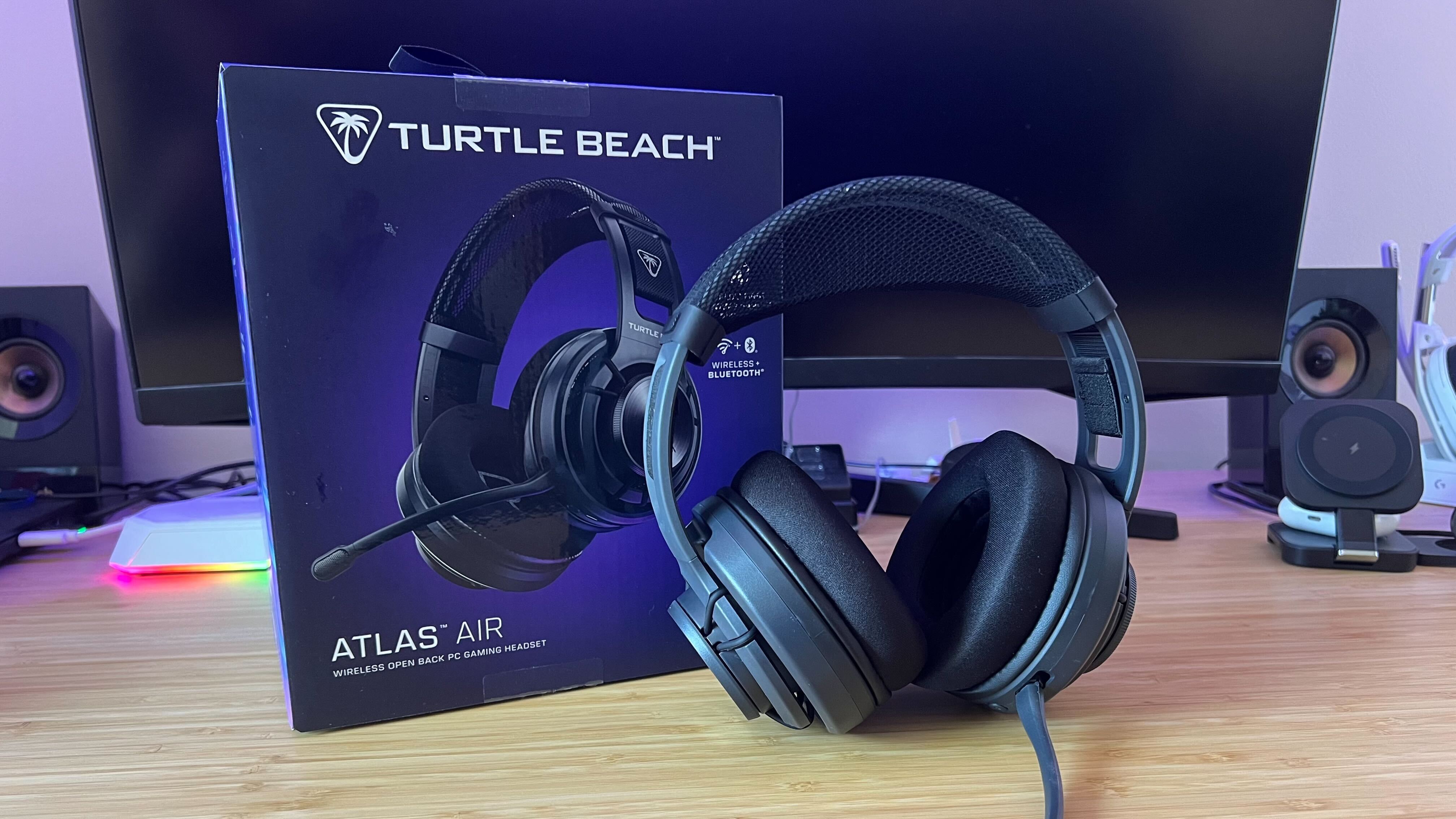
Specifications
Reasons to buy
Reasons to avoid
The Turtle Beach Atlas Air does things a little differently. Not only is it the brand's first open back gaming headset, but it's one of the first of this kind we've seen with a 2.4GHz and Bluetooth wireless connection. That's some serious power, and the fact that it still sounds great, doesn't top the price charts and is the most comfortable headset on the market right now makes it a top pick.
✅ You have your own gaming space: This is one for those with their own gaming space as the open back design will leak sound in both directions.
✅ You play for long periods of time: A mesh headband, floating earcups, and lightweight form factor make this the pinnacle of headset comfort right now.
✅ A wireless connection is a priority: It's rare to find an open back headset with a wireless connection - but Turtle Beach managed to stuff two into this thing.
❌ You're a streamer: An open back headset is perfect for streamers as they can hear themselves speaking much more naturally. Unfortunately, the Atlas Air's microphone can't quite compete with the Corsair Virtuoso Pro's.
❌ You prioritize audio quality over ease of use features: If you're going all out on sound quality, you'd be better off with the Corsair Virtuoso Pro as it has marginally improved sound. You are sacrificing a lot of other features to get there though.
Design: The Atlas Air blew us away in testing - this thing is seriously comfortable. A mesh headband combined with floating earcups and a relatively lightweight footprint made for an incredible impressive experience. There's absolutely no headband pinch (you can barely feel that it's there at all) and the lower clamp force has the cups gently resting against the ears.
It's a shame that lighter (and therefore cheaper-feeling) plastics have to be used to achieve this effect, as the Atlas Air doesn't look like the premium headset it is. That said, you can't go too far wrong with a subtle matte black aesthetic.
Features: There are very few open back gaming headsets with wireless connections, but the Atlas Air manages to squeeze both 2.4GHz and Bluetooth compatibility in this 301g headsets - and do so with a strong 50 hour battery life. That means it's far more versatile than the wired-only Corsair Virtuoso Pro (our previous top pick for the best open back gaming headset), running across everything from PC to Nintendo Switch.
You'll find a nice array of controls on the left cup with a Bluetooth quick-switcher button in pride of place. However, the volume knob is noticeably absent on first look. Turning the headset around, you'll find that the circular panel on this cup functions as a full volume control wheel. That's excellent for speedy tweaks without having to fumble for the right spot.
A detachable microphone is also available in the box - but even this little mic changes things up. It's completely removable for when you don't want it hovering in front of you, but once plugged in it becomes a full flip-to-mute number. That's not something we've seen before, but it's an incredibly flexible design that gives you the best of both worlds.
Audio: The Turtle Beach Atlas Air sounds fantastic. That open back design means soundstages are open, natural, and incredibly well-detailed. Lower ranges are free to hum away while highs and mids have plenty of space to draw out more intricate melodies, environmental effects, or dialogue tones. Plus, with that extra space in the soundstage, it's still easy to pinpoint enemies and movements in more competitive endeavours.
We previously had the Corsair Virtuoso Pro in pride of place here, due to its incredible audio quality and graphene drivers. In side-by-side testing, the Virtuso Pro did have a little extra to give, particularly when it came to the higher ranges however we were still more than impressed with the Atlas Air.
Verdict: The Atlas Air goes where no headset has really gone before - offering something new in a sea of $150 - $200 devices that struggle to differentiate themselves. A wireless open back headset with power and detail in equal measure and the most comfortable design we've ever experienced - this is one for the books.
Read our full Turtle Beach Atlas Air review for more.
Comfort | 5/5 |
Audio | 4/5 |
Battery | 3/5 |
Microphone | 3/5 |
Versatility | 5/5 |
Build quality | 3/5 |
The best gaming headset for battery
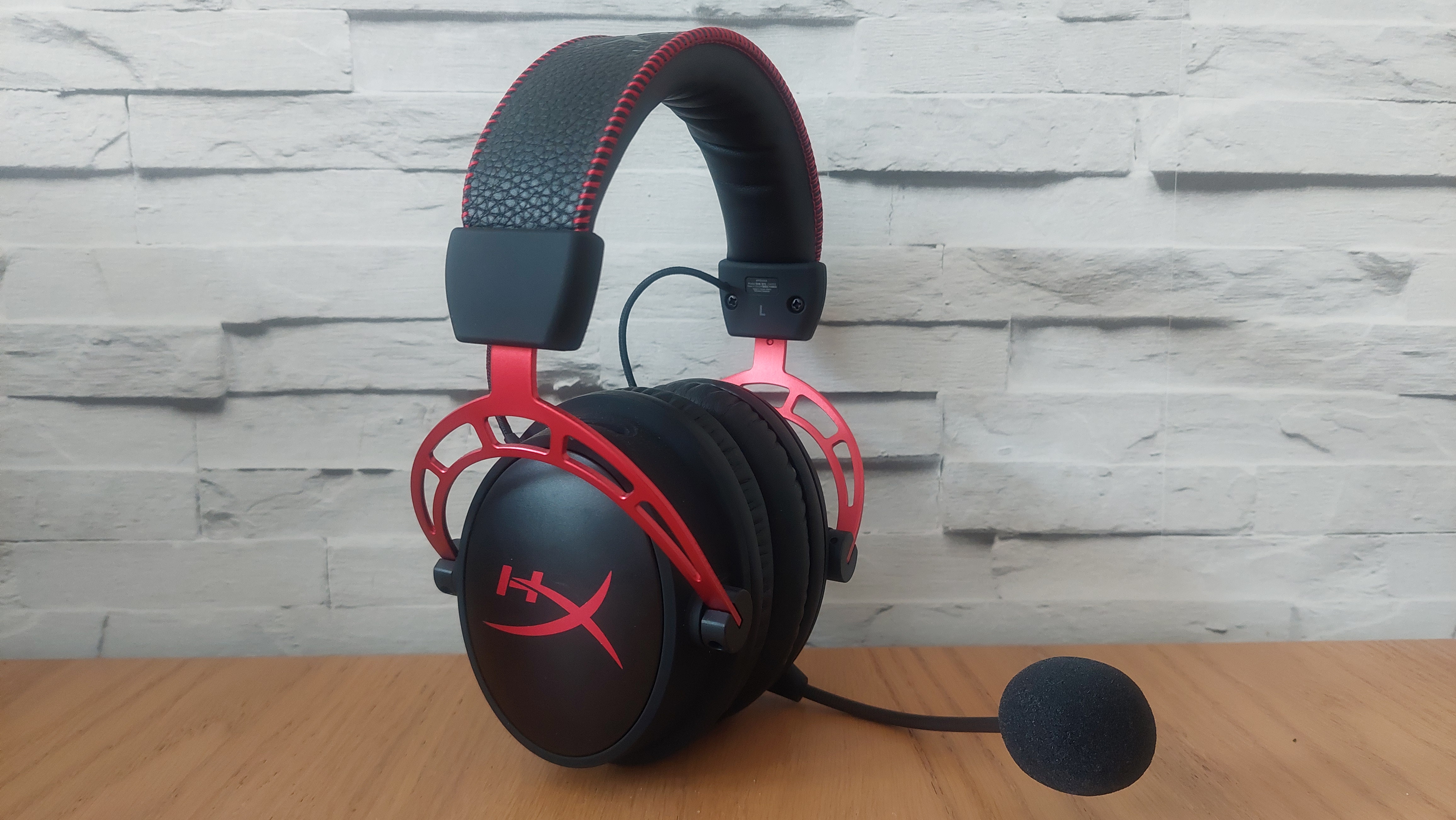
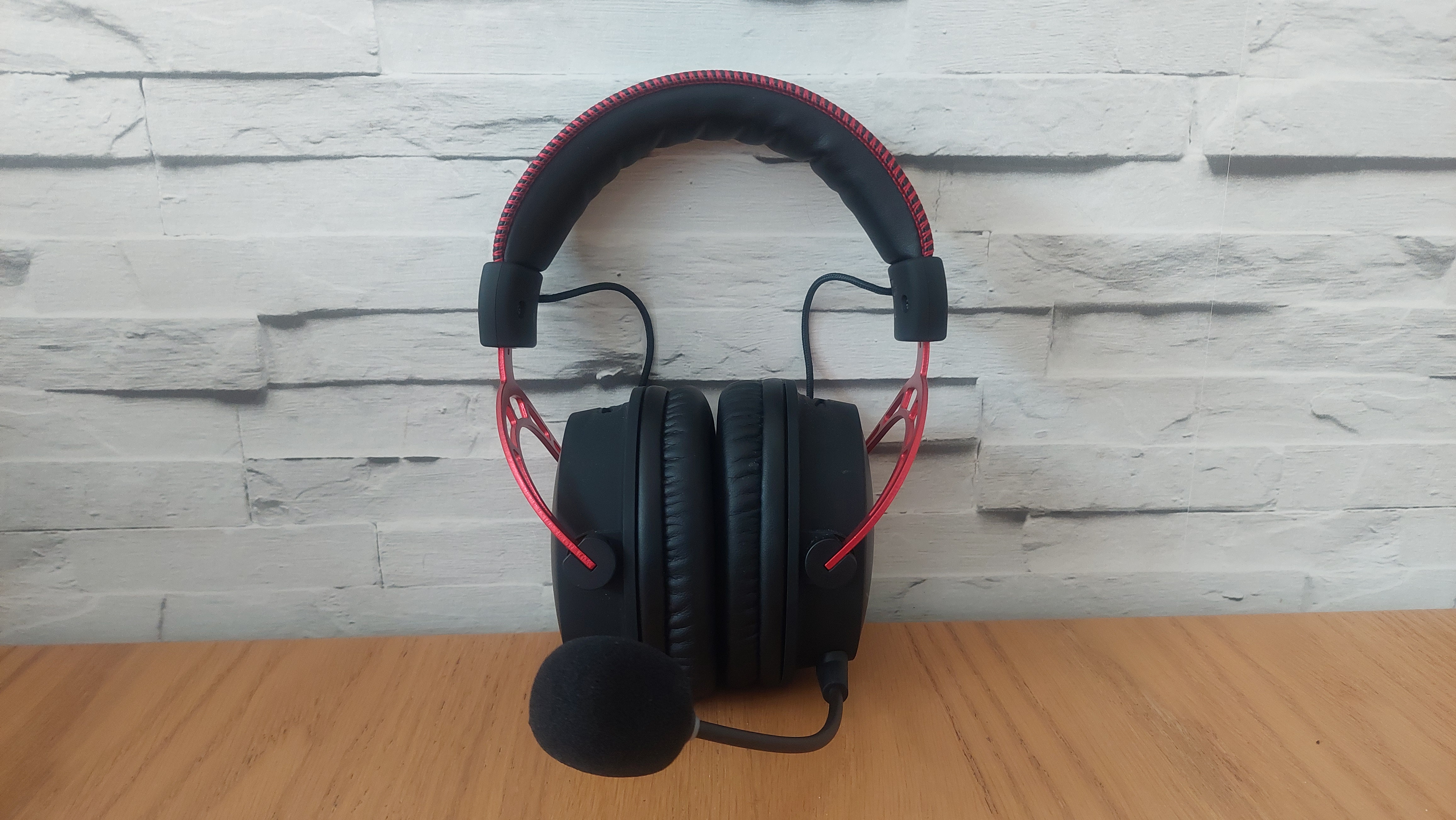
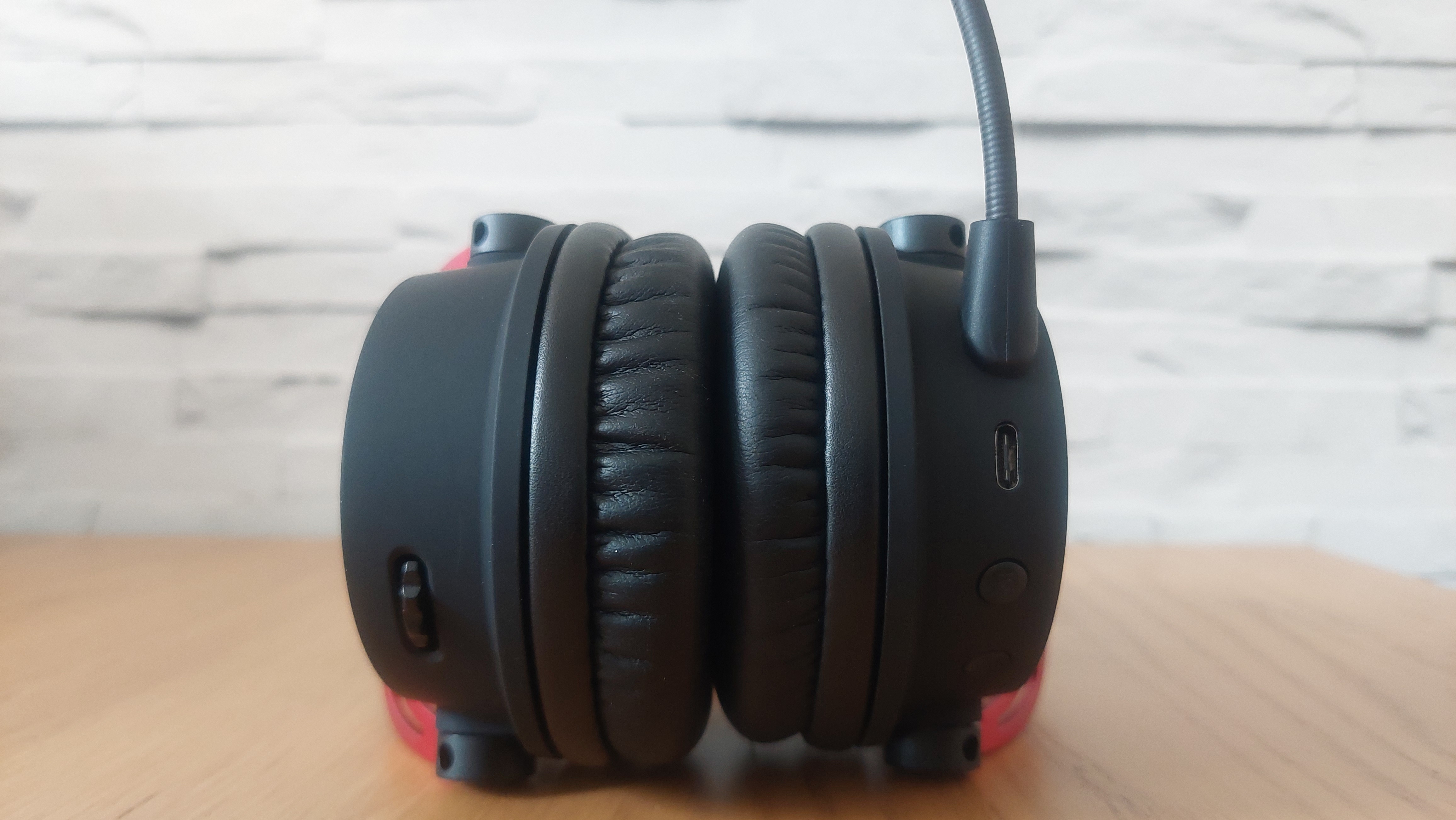
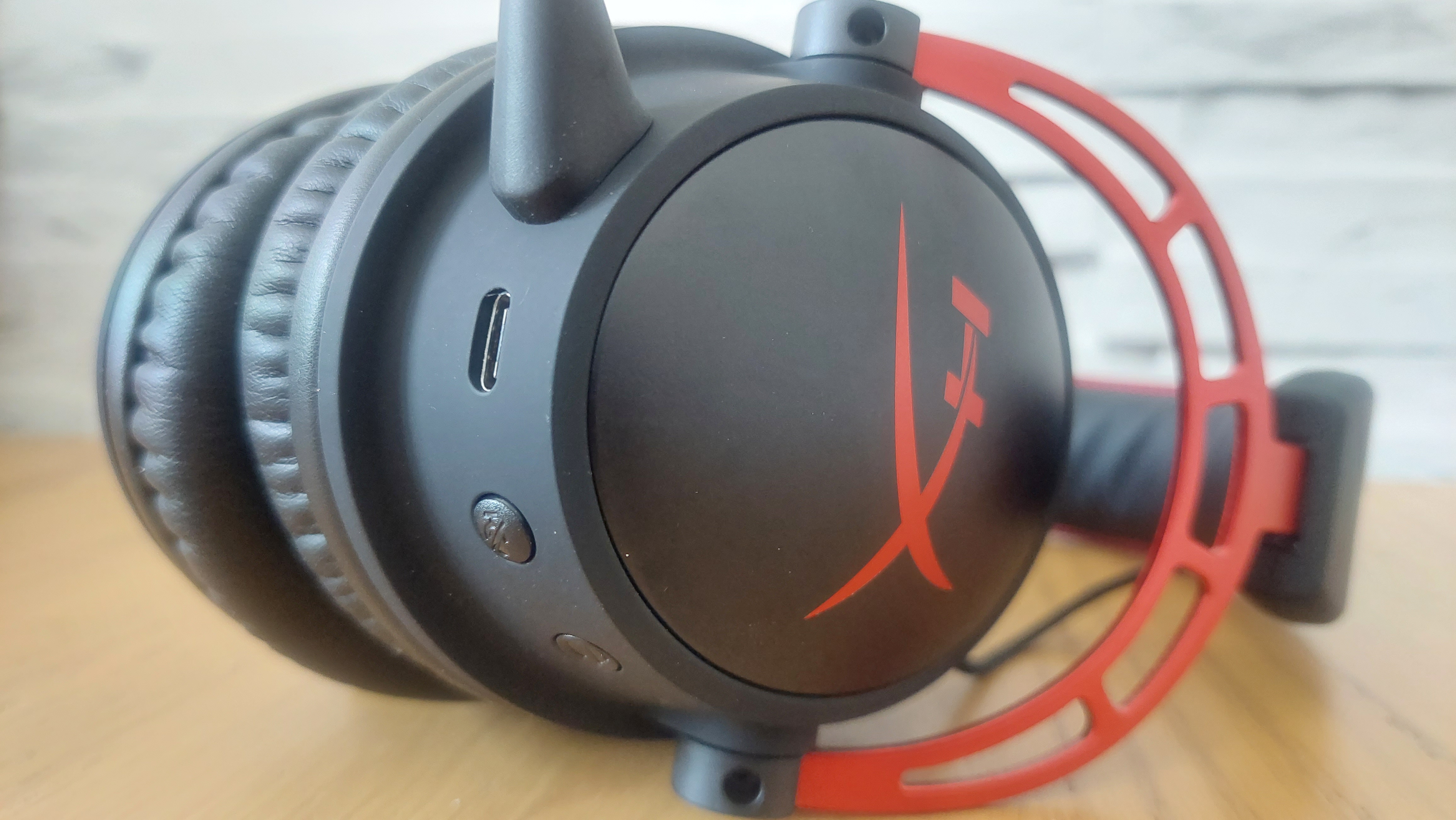
Specifications
Reasons to buy
Reasons to avoid
If you're after a workhorse of a single player experience, the HyperX Cloud Alpha Wireless is the best gaming headset going in terms of battery life. That's because there's a massive 300 hour power pack inside these cups - offering three times the battery life of our previous top pick for juice, the EPOS Sennheiser GSP 370. That only sounds more impressive once you realize the majority of wireless headsets can only report around 30 or 40 hours.
✅ Battery is everything: If you don't want to think about plugging in your headset a few hours before a session, this massive 300 hour charge is going to see you right. Considering HyperX hasn't sacrificed weight or audio quality to bring such a massive battery to its wireless headset, this is a seriously impressive piece of kit.
✅ You mostly play single player: The reduced mic quality means the HyperX Cloud Alpha Wireless is best serving solo players. If your library is more story / adventure based, you're going to have a great time here.
❌ You play online with chat: We found the microphone on this headset to be particularly disappointing. Between crackly and muffled audio and poor pickup, the boom has to be pretty much in your mouth for any semblance of useable audio. This is definitely not one for online multiplayer.
❌ Charging isn't a hassle: If you don't mind plugging in every now and then you can find better headsets on the market that won't reach the same battery mileage. The Sennheiser GSP 370, for example, still manages to pack 100 hours while also nailing the microphone.
Design: HyperX headsets don't fall far from the tree, so the Cloud Alpha Wireless could easily be mistaken for the standard Cloud model. That said, we're big fans of those sturdy red arches, as well as the exquisite stitching running across the chunky headband. The red and black aesthetic pops color into your setup while still managing to look slick and suave - and the cherry on the cake is that comfort. With a goldilocks weight, we were able to keep these cups on the noggin for hours at a time.
Features: The HyperX Cloud Alpha Wireless is not going to cut it if you play a lot of online multiplayer. While we've always been impressed by HyperX's boom mics, this particular implementation does a severe disservice to the brand. Audio was both crackly and muffled in chat and on work calls, with the only resolution being to move the mic directly next to the mouth and upping the sensitivity levels.
Onto that 300 hour battery, though. When we first heard of such a revolution we were sceptical. How much does this thing weigh? Is it actually alive for 300 hours of gameplay, or is this a theoretical number based on simplistic battery tests? Once we got it in our hands, though, it was obvious this is the real deal.
We took it out of the box, charged it all the way up and just played... and played... and played. We counted up to 110 hours of total battery life at the start of our testing and then gave up scratching tallies in the wall - we were still at 70% capacity at that time. HyperX isn't lying to you here, this is a game-changer. And yet this thing weighs only 322g - well within the reasonable range for a comfortable headset.
Audio: Sacrifices haven't been made in the audio quality department to achieve such a battery feat either. The wireless edition is every bit as punchy as its cabled companion - the HyperX Cloud Alpha featured further up the page. Everything from the expansive open worlds of Red Dead Redemption 2 and Assassin's Creed: Valhalla to the densely populated street sounds of Spider-Man: Miles Morales was represented beautifully, with careful attention to detail at all ranges. What's more, music and TV were equally impactful.
Verdict: The only gaming headset that comes close to the HyperX Cloud Alpha Wireless's battery life in the Sennheiser GSP 370 - and you're dropping 200 hours. This is the absolute best option for those playing single player for multiple sessions without charging in between. However, it's worth noting that Sennheiser's option does bolster your mic performance while still offering plenty of juice - so should be considered if you play with chat.
Read our full HyperX Cloud Alpha Wireless review for more.
Comfort | 4/5 |
Audio | 4/5 |
Battery | 5/5 |
Microphone | 1/5 |
Versatility | 3/5 |
Build quality | 4/5 |
How we test gaming headsets at GamesRadar+
We test gaming headsets across a minimum of two weeks per device, but this isn't just a lab of metrics. We live, work, and play with every gaming headset that cross our paths during this time, inserting them into our own PC and console setups and living with them as if they were here to stay. That means we can get to know the intricacies of each device particularly well, while also making sure their features, design, and overall performance are on par with the rest of the market in terms of value.
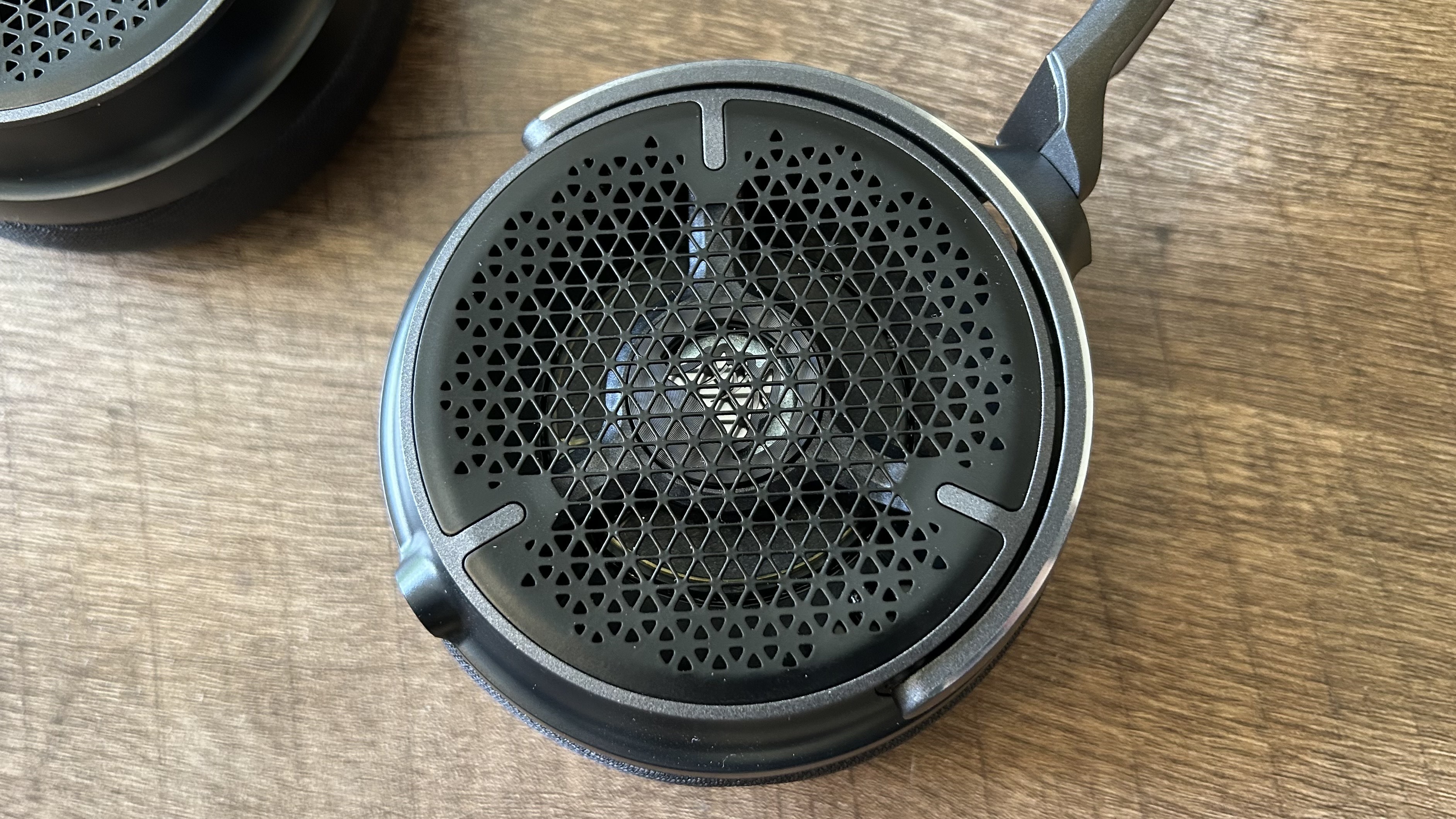
The first thing we clock about a gaming headset is its design. Of course, we've all got our own snap feelings when we first pull a device out of the box but outside of aesthetics we're constantly on the lookout for any indication that a gaming headset's build quality might not go the distance. That means noting the materials used across chassis, struts, cup cushioning and cover, and charging cables, as well as the actual joinery of everything together. We're listening and feeling for any rattle or creaking during everyday use (and slightly more pressured handling). Then we consider design from a comfort perspective, balancing the weight, padding, adjustment options, and clamp force over long sessions of around eight hours. Typically this will take place during a work day, wearing the headset for music for an extended period of time, but this testing will also often take place during longer gaming sessions as well.
We assess a gaming headset's feature list according to value for money and overall quality. That means we're looking at what a headset does and doesn't offer compared to the rest of the competition (wireless connection options, EQ settings, microphone placement, onboard controls, additional software customizations, charging features, and battery life makes up the bulk of this). However our focus on these features allows us to make a wider assessment of the versatility and ease of use of each headset.
Testing gaming headset performance is a big undertaking. One soundstage may be perfect to one player and lacking for another - audio itself can still be fairly subjective. That's why we test each headset across the same games, with each title offering a slightly different challenge for the drivers.

Marvel Rivals and CS2 are our competitive games of choice, used for testing directional accuracy, microphone clarity, and soundstage imaging, particularly in the lower mid-range. We use a wider open scene with a couple of nearby machines in Horizon Forbidden West to see how well each headset deals with a cluttered mid-range, and how well it balances these more clustered scenes. Marvel's Spider-Man Miles Morales is used to measure directional audio in a busier scene (the main mission Time To Rally). Doom Eternal tests a gaming headset's power in the lower range, as well as the depth of its soundstage. Dead by Daylight is used to measure a less busy, but more atmospheric, environmental soundstage and how it places voice-chat within the audio soundscape.
We finally use each headset across a few levels of Super Mario Sunshine or Super Mario Galaxy to assess the handling of higher ranges as well. Some game choices can differ depending on any given reviewer's access, and it's always pertinent to test headsets during a whole range of games, including titles even outside our specified list. Ensuring we're using not just the same games across each headset we test, but also brand-new releases is pertinent to recommending each and every set of cups.
Once each headset makes it through the full testing process, it is assigned scores based on comfort, audio, battery, microphone, versatility, and build quality for each comparison across previous reviews. We're constantly comparing headsets to their similarly priced competitors - often switching back and forth between the devices during testing.
For more information on how we test gaming headsets, check out the full GamesRadar+ Hardware Policy.
Also tested
We're constantly testing gaming headsets to make sure that the list above is up to date with the latest and greatest devices on the market. That means many of the cups we review don't make the final top list. You'll find the gaming headsets we've recently had on the bench just below.
Corsair Void Wireless V2 | Available at Amazon
The Corsair Void Wireless V2 is the latest budget pair of cups from Corsair, yet while it's low on price, the headset isn't low on quality. At $119.99 / £99.99 the Void V2 still manages to pack in custom 50mm Neodymium drivers, which I wouldn't expect for the around $100 price tag, not to mention a great-sounding microphone, and two strips of customizable RGB lighting. As a wireless headset with both Bluetooth and 2.4GHz options, it's still pricer than the SteelSeries Arctis Nova 1, and even the Razer Barracuda X. The latter of which also provides a wired option with the Void V2 is lacking, which is why it doesn't quite knock either off the best gaming headlist list, for now.
Corsair Void Wireless V2 review
OXS Storm G2 wireless headset | Available at Amazon
The OXS Storm G2 wireless gaming headset stands out from the rest due to its unique off-white design, however, it's not compatible with Xbox consoles. While it brings wired, Bluetooth, and 2.4GHz connectivity to the table, its Bluetooth also does work with the PS4/PS5, making its multi-platform compatibility fairly limited. The Storm G2 does pack an impressive mic and comfortable fit in a sub $100 price range, however, its bad audio quality and cheap-feeling build means it's not a viable entry as one of the best gaming headsets out there.
OXS Storm G2 wireless headset review
Turtle Beach Stealth 700 Gen 3 | Available at Amazon
The Stealth 700 Gen 3 is the latest addition to the Stealth headset line, introducing high-end 60mm dual eclipse audio drivers to a mid-range pair of cups with a $199.99 / £179.99 price point. This headset has an impressive list of features, from up to 80 hours of battery life to some of the best-sounding audio found in a headset. However, it's more expensive than its mid-range rivals and doesn't quite live up to the comfort and design set by alternatives like the Razer BlackShark V2 Pro.
Alienware Pro Wireless headset | Available at Amazon
The Alienware Pro Wireless gaming headset is a sleek entry for the Alienware brand which sits on the mid-range of the market with its $229.99 / £221.99 price point. While it's pricier than other mid-range cups, it sets itself apart with its active noise canceling and wider 20Hz - 40kHz frequency range while still ensuring a comfy fit. As it stands, the Alienware Pro Wireless headset is a cheaper alternative than the SteelSeries Arctis Nova Pro Wireless, which reigns supreme in our best gaming headset list. However, the Arctis Nova Pro is still our top pick due to its flexible mic integration, hot-swappable batteries, and high-end audio quality that the Alienware Pro pair of cups doesn't quite live up to.
Alienware Pro Wireless headset review
Asus ROG Delta II | Available at Amazon
The Asus ROG Delta II headset introduces a lot of modern enhancements to the Delta headline line, most notably the mid-range set of cups can simultaneously connect to consoles via Bluetooth and 2.4Ghz. At $229 / £219, while an impressive piece of tech, it feels like a weaker package compared to Razer's BlackShark V2 Hyperspeed or the SteelSeries Arctis Nova 5 wireless headset already part of this list.
Razer Barracuda X Chroma | Available at Amazon
The Razer Barracuda X Chroma (2024) introduces RGB lighting to the Barracuda lineup for the first time and still manages to uphold the sound and build quality that the previous headsets established. The multi-platform excellence providing an easy switch between Bluetooth and 2.4GHz wireless connections is still on full display, but this flashy add-on comes at a cost of $129.99/£129.99 making the previous model a more budget-friendly option.
Razer Blackshark V2 Hyperspeed | Available at Amazon
The Razer Blackshark V2 Hyperspeed may be an older entry in the Blackshark line, but at $129.99 / £129.99 it's still one of the best mid-range headsets cash can buy. The headset packs in Razer's iconic Razer TriForce Titanium 50mm audio drivers and can regularly be found below the $100 mark during sales and discounts - making it a viable choice at one of the best budget headsets available today.
Turtle Beach Stealth 500 | Available at Amazon
The Turtle Beach Stealth 500 is a solid proposition in its own right, offering both Bluetooth and 2.4GHz wireless connections with a comfortable ski-style headband design for just $79.99 / £79.99. However, it's not doing enough to make the $20 leap to the Stealth 600 Gen 3 feel unwarranted, and does pose its own durability concerns from testing.
Turtle Beach Stealth 600 Gen 3 Wireless | Available at Amazon
Turtle Beach's latest Stealth headset is a fantastic buy at under $100 / £100, but it's a jack of all trades without mastering anything in particular. It's a solid all-rounder without the edge to see it nail a spot among the greats.
HyperX Cloud 3 Wireless | Available at Amazon
The HyperX Cloud 3 Wireless certainly packs an impressive battery - second only to the Cloud Alpha featured above. However, its limited connectivity options mean it's not as practical as other headsets in its price range.
Corsair HS80 Max | Available at Amazon
The Corsair HS80 Max is pitching at a fairly luxury price point, but doesn't offer the mic quality, comfort level, or versatility to truly nail its market. It's still a solid headset, especially if you don't want to tinker with EQ settings too much.
Panasonic Soundslayer Wireless | Available at Amazon
While it's not quite a gaming headset, the wearable speaker is still designed to offer immersive game audio. The difference here is your ears are left completely free - that's comfortable and far easier if you need to stay tuned into your surroundings. However, audio quality takes a serious hit. This isn't one for those serious about sound.
Logitech G Pro X 2 | Available at Amazon
The Logitech G Pro X2 is a fantastic headset by itself, but its lower quality microphone and USB-A 2.4GHz receiver keep it from truly being the best for PC. It's still a solid set of graphene cups with an excellent battery life to boot.
Sony Inzone H5 | Available at Amazon
The Sony Inzone H5 sits between the PC and PS5, but unfortunately it can't quite hit enough boxes for each system to stand out in either. Your configured settings on PC don't transfer to PS5, but there's no Bluetooth for dual PC use either. There's no killer feature to put it in either camp right now, so it slips the net.
RIG 800 Pro HS | Available at Amazon
The RIG 800 Pro HS is a particularly comfortable headset, and it comes with a charging dock for a fraction of the Astro A50's price. However, its cheaper construction, older ports, and lower quality audio mean it's not a top shelf item.
Turtle Beach Stealth Pro | Available at Amazon
The Turtle Beach Stealth Pro is a fantastic headset, and it actually featured as our favorite multiplatform device before the Astro A50X came along. Without that smart switcher, and with a weaker battery system than the Nova Pro Wireless, though, it's a little stranded now.
How to choose the right gaming headset
Why you can trust GamesRadar+
Finding the right gaming headset for you comes down to a series of factors; what, how, where, and when you play. Each of these factors has a different bearing on the connection, overall design, microphone, and battery life of your device. Of course we all want the best audio experience possible - but finding the right combination of these extra features can help you get the best value for money overall.
That's because some players might be able to drop more expensive features like wireless connections or high-end microphones in order to pick up far better sound quality for their money overall. On the other hand, some may prefer to put more cash towards a long-lasting battery life and versatile suite of connections rather than prioritizing competition-level sound. Finding the right balance of priorities can help you find the right headset at the right price.
Wireless connection
A wireless connection can still add a premium to your price tag, especially if you're looking at dual Bluetooth and 2.4GHz devices. However, if you want ultimate versatility with other devices it's well worth investing in (RIP the 3.5mm jack).
PC, console, and handheld players can all find value in a wireless connection; they're far less messy overall. However, it's the players who also want their headset to double as a set of headphones that will get the most out of them.
It's worth noting that the vast majority of headsets released at the moment are wireless. There are still wired-only models floating around, but they tend to stick to the bottom of the price range.
Form factor
Form factor might make more of an impact on the versatility of a headset than its connection at this point in time. Gaming headset still look like they're built for games - which isn't ideal when you want your premium purchase to double up outside of the house. If you want to use your headset on your commute, I'd recommend picking up a smaller 40mm set of cups with full 180 degrees of rotation in the hinge and a softer, less angular design.
Form factor also balances the weight of your headset. If you know you're going to be playing for long periods of time, it's well worth prioritizing a lightweight device. While you might drop a little battery life, the benefits to your skull are immeasurable. 240g - 280g is considered nicely lightweight.
Microphone
This might be an easy no-brainer, but it's worth investigating the microphone options available to you. If you only play with chat on, you'll want to invest a little more in your microphone quality than someone who only plays solo. On the flip side of that, it's well worth making sure that your microphone is detachable if you do play single player - there's nothing more annoying than an extra boom in your face that you never need. A lot of headsets now ship with flip-to-mute mics or arms hidden inside the cups themselves. While they're often a little more expensive, this is the best option for those who swap between playstyles as you'll never have to worry about losing that extra accessory.
Battery life
There are headsets out there that max out battery life but drastically sacrifice other features to get there (looking at you HyperX). In general, most headsets aim for around 50 - 100 hours of battery. If you play for a couple of hours every evening, that will see you sorted for a good few weeks.
I would recommend moving to the top of this range if you regularly play on a handheld on the go, or in a travelling setup. There's nothing worse than forgetting to plug in the night before and being met with a beeping headset first thing in the morning. However, if you only ever tend to play at home, you can afford to shrink your battery in favor of other features like audio quality or a lower weight - especially if the headset offers a wired connection as well.
Whether you play competitively or solo, at home or on the road, exclusively on Switch or on a $6K gaming PC, finding the right balance between your connection, form factor, microphone, and battery life can narrow the playing field considerably. Once you know what to prioritize you've found your ideal gaming headset - it's just a case of scouting the model that fits the bill.
Best gaming headset: FAQ
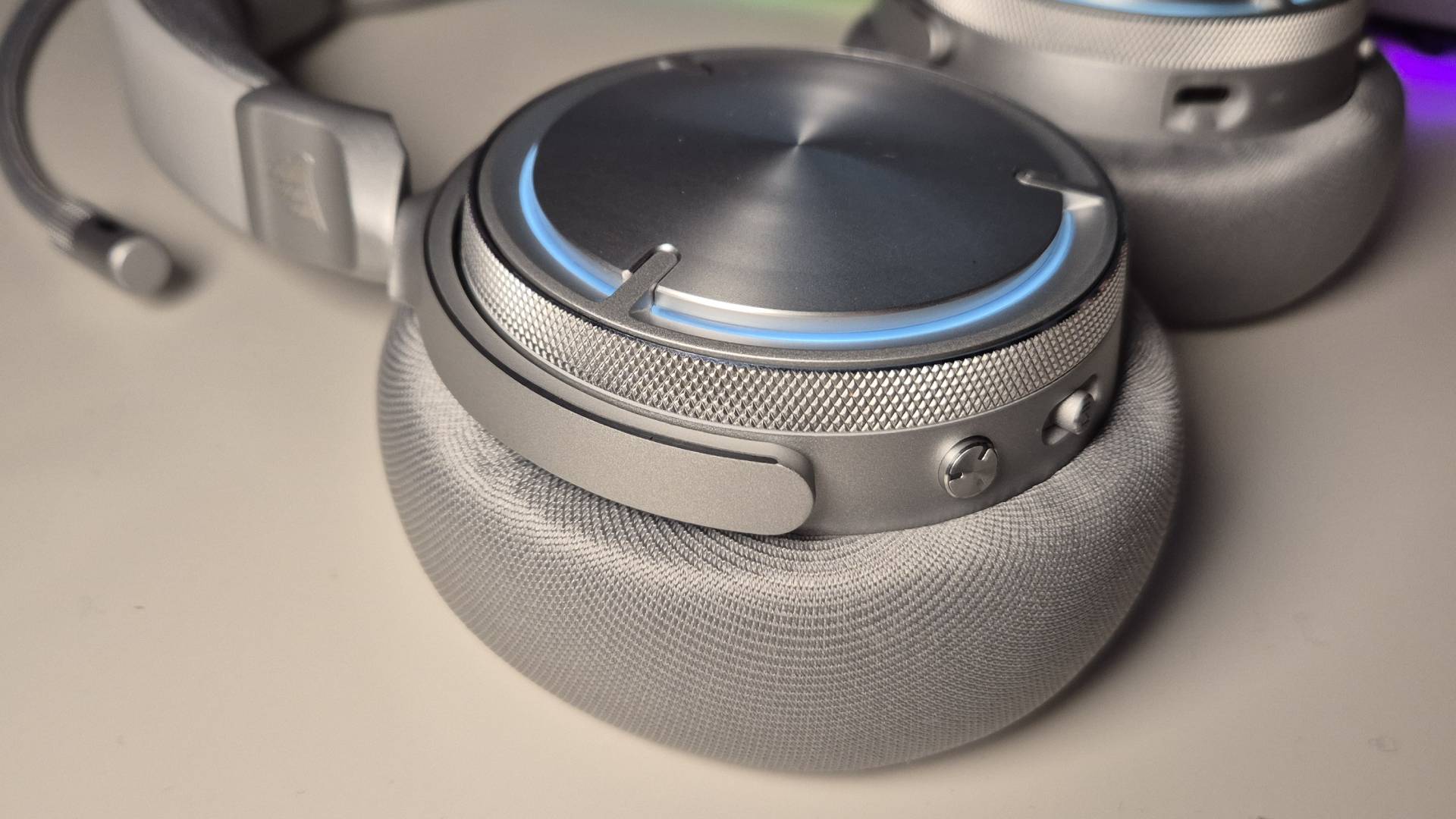
What is the best gaming headset in 2025?
The best gaming headset right now is the SteelSeries Arctis Nova Pro Wireless, though with a hefty price point it's certainly not going to be right for everyone. If you're looking to spend less than $50 / £50, the Corsair HS35 is the best gaming headset for you. Meanwhile, anyone after a mid-range $60 - $100 / £60 - £100 headset should invest in the Razer Barracuda X or the Razer Barracuda X Chroma (it's upgraded RGB counterpart).
How much does a gaming headset cost?
Gaming headsets come in a range of different configurations and, therefore, prices. At the budget end you can expect to pay between $40 and $60 / £40 and £60 for a wired headset with solid stereo audio quality, basic drivers, and a detachable boom microphone for online play. As we near the $100 / £100 mark you'll find more surround sound and wireless options, larger drivers, and additional EQ customization options.
The $100 - $200 / £100 - £200 price range is the most competitive. This is the upper mid-range where we tend to see high value gaming headsets offering premium features with some sacrifices to build or additional extras. Drivers and surround sound qualities will all be improved dramatically in this price range, and you'll find higher quality materials (which means a more comfortable form factor and longer lasting durability). You're also more likely to pick up split connections in this price range, allowing you to swap between a 2.4GHz and Bluetooth connection with different devices.
Gaming headsets over $200 / £200 will feature the latest and greatest in audio technology, long battery lives, in-depth EQ settings, and other quality of life features like active noise cancellation.
What is the best gaming headset brand?
There are plenty of gaming headset brands out there competing for your cash. In our experience, though, the best are SteelSeries, Razer, Corsair, Turtle Beach, HyperX, and Astro.
Is a wired or wireless gaming headset better?
Some gaming headsets are definitely better than others. Yet whether a wired or wireless gaming headset is better depends on how and what you use your gaming headsets for, and of course, personal preference.
Typically wired headsets are cheaper, making them ideal for those with a strict budget to stick to. If keeping the price low is a priority then a wired pair will likely be more up your alley and a better choice overall. Plus, if you want absolutely zero latency in your day-to-day gaming, the reliability of a wired gaming headset is hard to best.
However, many of us prefer the freedom of a wireless connection. Wireless headsets have the main benefit of letting you move around, just so long as you don't wander too far out of the range the headset is capable of. With a lot of other tech, like smartphones, also lacking headphone jacks, wireless headsets can also be a great alternative to a normal pair of headphones.
The setup process of a wireless gaming headset can be dependent on the brand and can be subject to latency issues whether you're connecting up via Bluetooth or 2.4 GHz. So if you prefer a more straightforward plug-in-and-play connection, wired is the way to go. Again, it's all dependant on how you prefer to play your favorite games, and whether you value affordability and lack of latency over freedom of movement.
What is the best gaming headset for the Nintendo Switch 2?
The Nintendo Switch 2 doesn't launch until June 5, and so we haven't yet been able to put a ton of headsets to the test to see what best suits the upcoming handheld. predecessor.
As soon as we get one in our hands, we'll be putting all the best gaming headsets to the test to see what truly enhances the Switch 2 experience, from the best budget pair of cups to the most premium options available. Of course, we'll also be testing every Switch 2-specific headset that passes our testing bench, and as always, we'll still be sticking to that two-week minimum testing time to create a truly comprehensive list.
If any wired pair of cups isn't for you, our best wireless headset guide is full to the brim with purely wireless peripherals - no being at the mercy of wires there. If you're looking for a pair specifically for your console of choice be sure to check out our best Nintendo Switch headsets, best PS5 headsets, or our best Xbox Series X headsets guides instead.
Sign up to the GamesRadar+ Newsletter
Weekly digests, tales from the communities you love, and more

Ever since I first held a NES controller in my hand I've been obsessed with gaming, and the hardware it runs on. I could hook up a NES and SNES to a telly, without instructions, before I could walk. Even now, nothing is more exciting then taking a console, or handheld, out the box for the first time and setting it up. This obsession transformed into a love of games and game music, which lead to my music degree and dream of becoming the Scottish Nobuo Uematsu. After sharing my love of games through music, I began to share my love through words on sites like TechRadar and iMore. This lead to becoming a Hardware staff writer for PCGamesN, and later the Senior Tech Writer for Dexerto, covering all things Steam Deck, PlayStation and Nintendo. With that experience, I was able to level up as Hardware Editor for GamesRadar+, where I'm still just as Nintendo, PlayStation and gaming tech obsessed as ever.
- Tabitha BakerManaging Editor - Hardware
